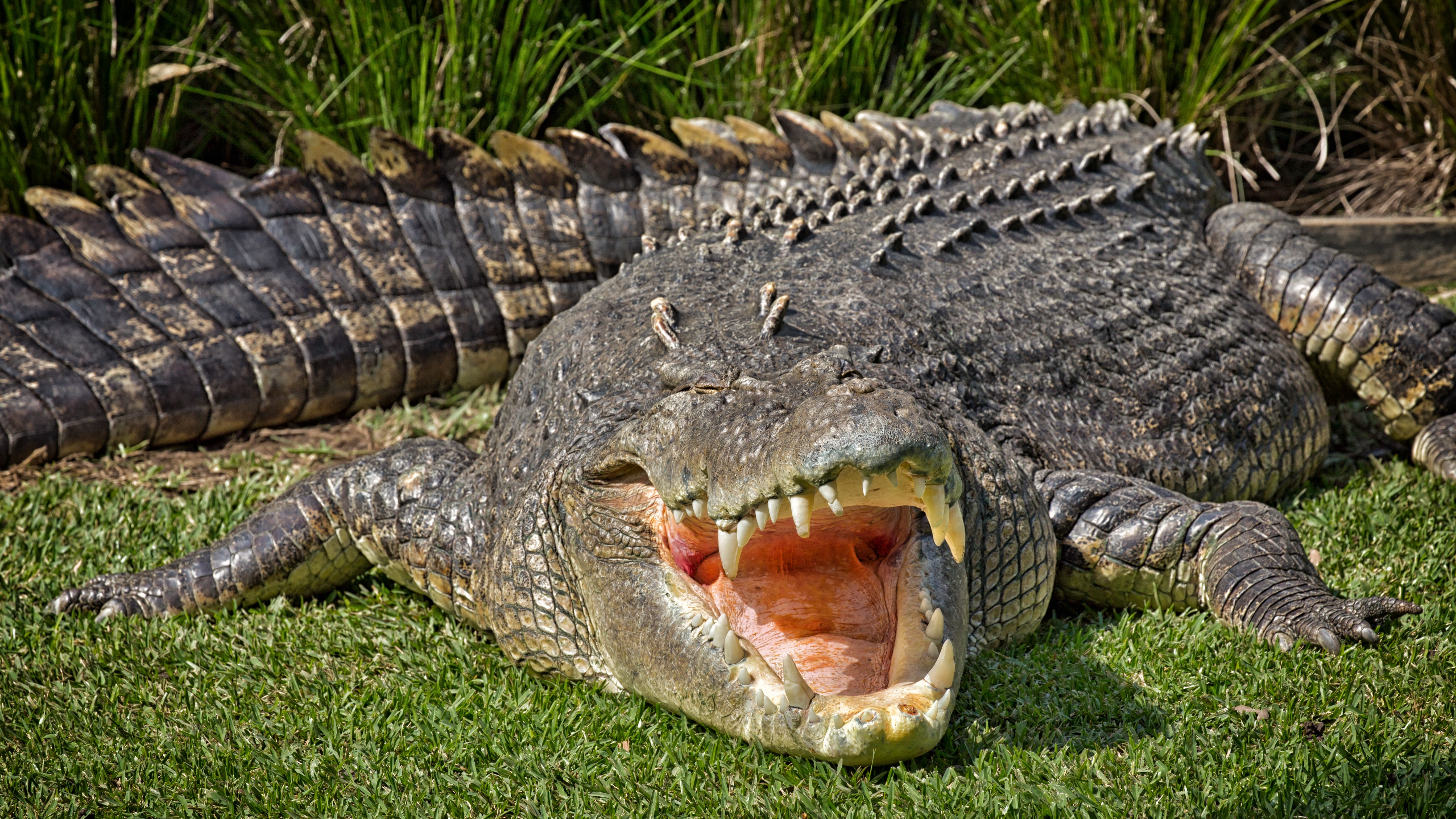
You may be surprised to discover that physical strength and size isn't what sets apart the world's most dangerous animals.
In fact, some of the world's smallest creatures can be the deadliest to humans, spreading life-threatening diseases to millions each year with a pin-prick size bite. From the box jellyfish to the pufferfish, the ocean is also home to some of the world's most venomous and poisonous creatures on the planet. And humans are among the deadliest animals of all; we kill each other and inflict violence at staggering rates.
Mosquitoes
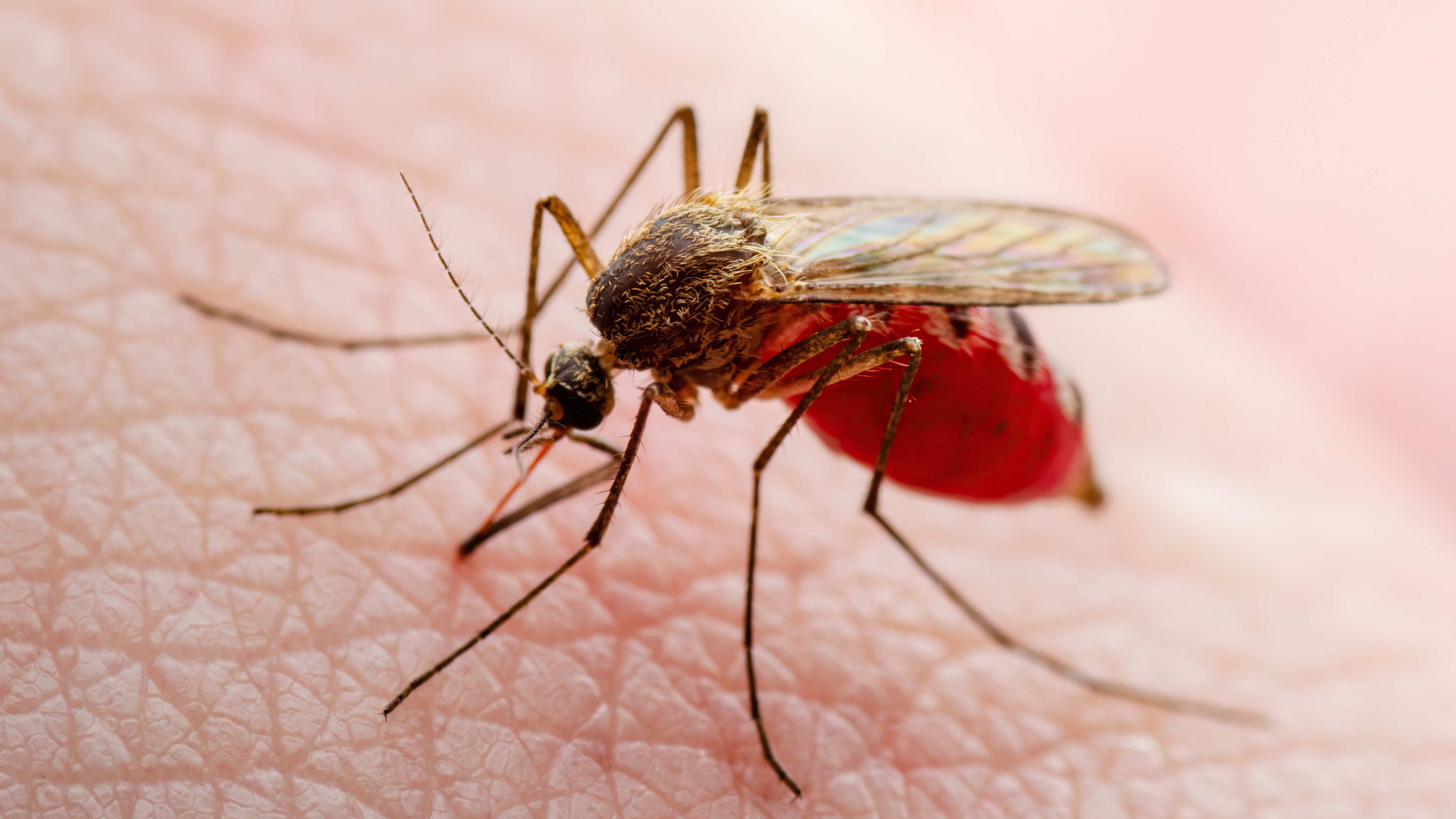
The world's most deadly non-human animal is the tiny mosquito. Mosquito-borne illnesses, such as malaria, kill an average 780,000 people a year, according to the World Health Organization (WHO). This flying, blood-sucking insect is commonly found in hot, humid environments near a water source, which enables them to breed and thrive.
Mosquitoes belong to the family group Culicidae, and there are over 3,500 species worldwide. However only a small number of these (Anopheles, Aedea and Culex) carry deadly diseases such as malaria, yellow fever, dengue and Zika virus. Malaria is a parasitic infection carried only by female mosquitoes and is particularly prevalent in Africa. The majority of the victims are children aged five or under. Mosquitoes can also cause the death of other land mammals, including livestock.
Records show that mosquitoes existed at the same time as dinosaurs during the late Cretaceous period.
Humans

Humans (Homo sapiens) are one of the world's most dangerous land mammals. A 2019 report by WHO recorded 475,000 deaths by homicide globally in member states. Central America and the Caribbean reported the highest murder rates, with over half of deaths caused by a firearm. Violence-related injuries, which can encompass traffic collisions and suicide, kill 1.25 million annually, according to WHO.
Despite the relative fragility of humans compared to other predators, it is our ability to use complex tools (weapons) and opposable thumbs that makes us so dangerous.
According to a 2023 study, humans also have a predatory niche, which has evolved over centuries with advances in technology. Human behavior also has a destructive impact on the planet. A 2021 study found evidence that 99% of peer-reviewed scientific studies concluded that human activity is responsible for climate change.
Black mambas
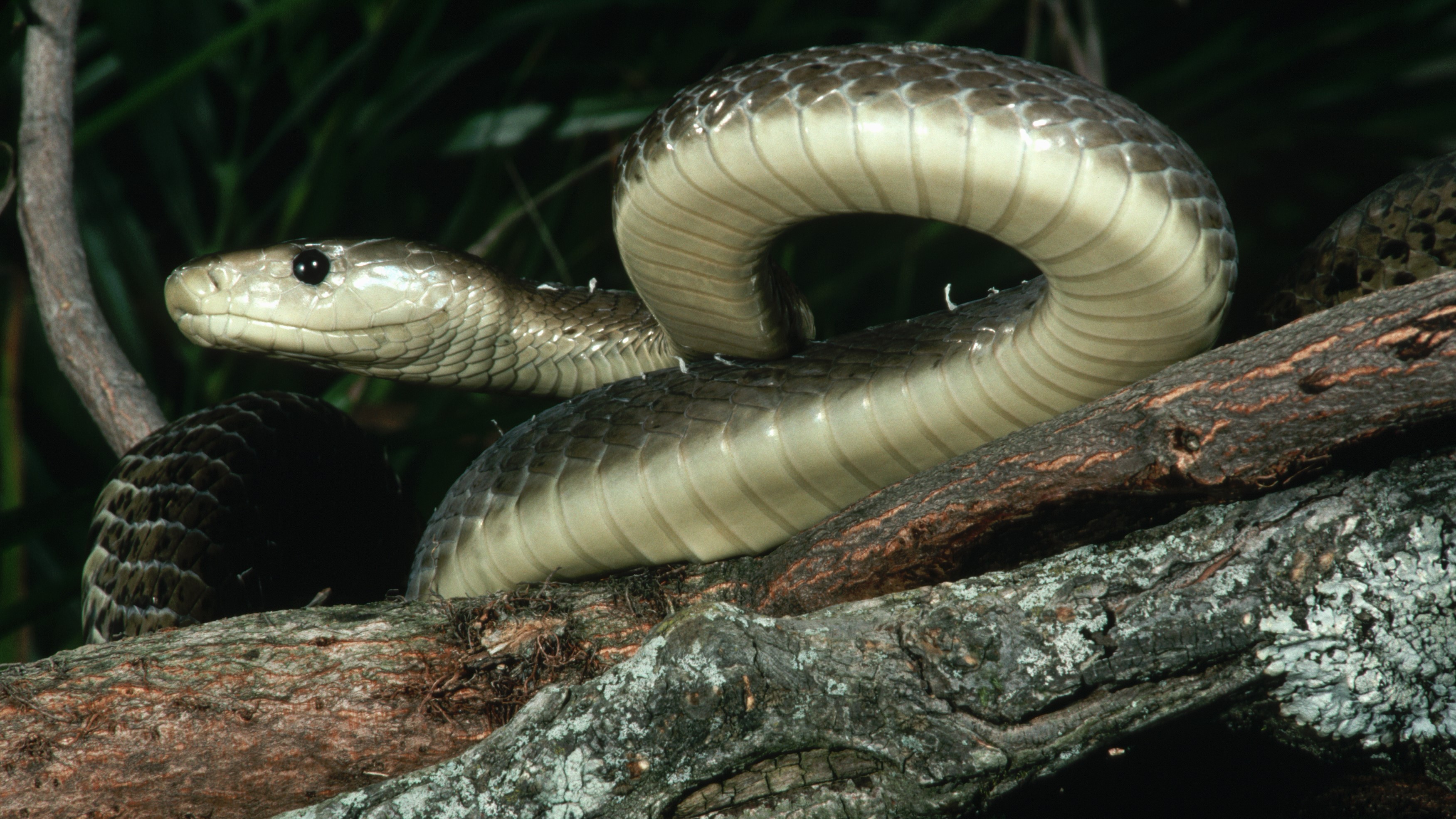
Africa's most deadly snake is the black mamba, an incredibly fast — and deadly — venomous snake species found in sub-Saharan Africa countries. One reason a bite from a black mamba (Dendroaspis polylepis) is so deadly is the amount of venom it can administer and the speed at which the venomous toxin takes effect. Once bitten, an individual can experience body paralysis, breathing difficulty and organ failure, including cardiac arrest.
Without antivenom, the bite is almost always fatal. If untreated, death can occur from anywhere between three and 16 hours, according to the African Snakebite Institute, although some people can experience severe breathing difficulties in less than 30 minutes.
Saw-scaled vipers
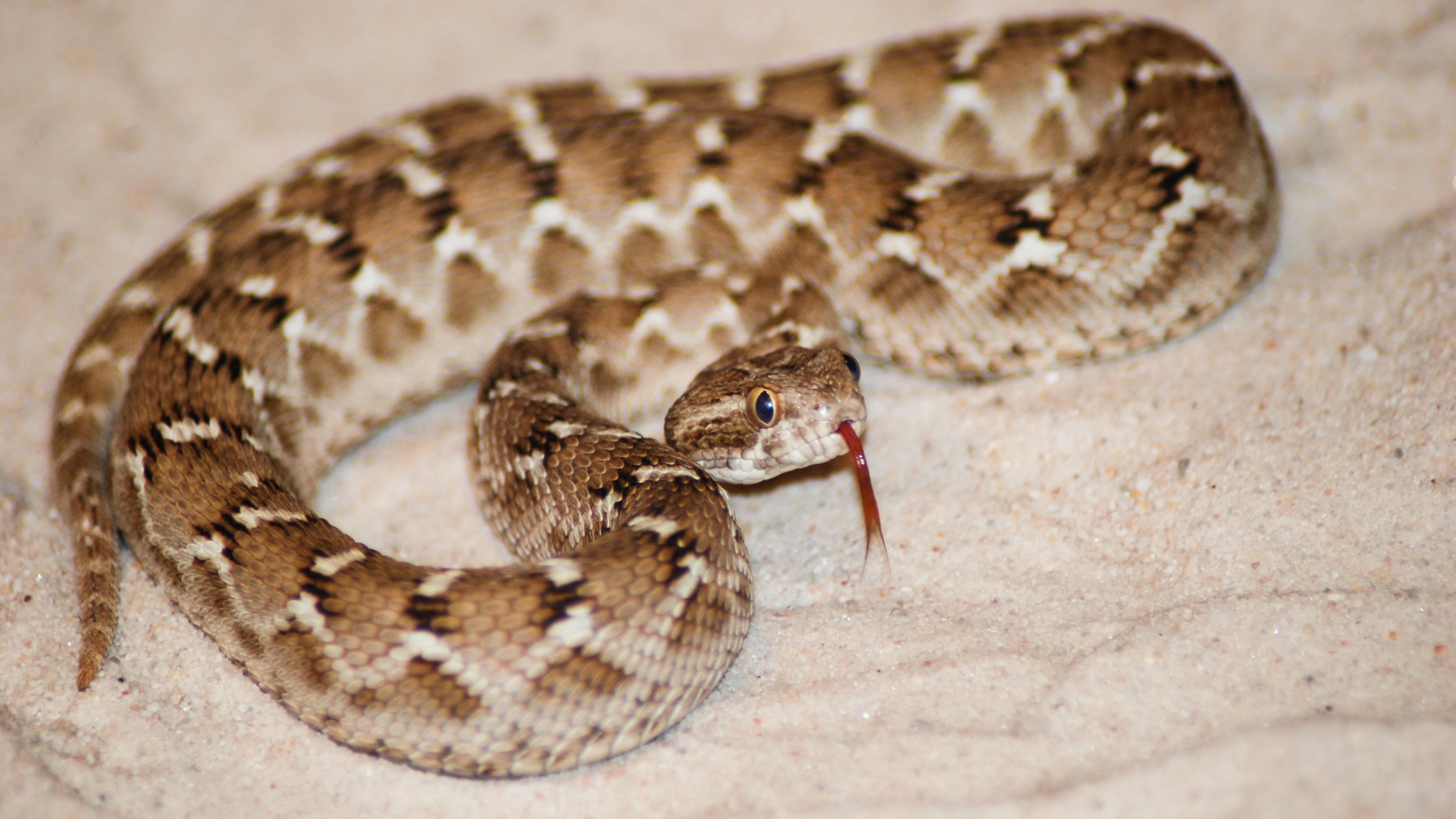
The venomous saw-scaled viper (Echis carinatus) is a particularly aggressive and dangerous snake species belonging to the viper family, which along with the Indian cobra (Naja naja) Russell's viper (Daboia russelii) and the common krait (Bungarus caeruleus), account for most of the 58,000 deaths per year in India. Global deaths from snake bites are most commonly caused by venomous snakes, according to the WHO.
Found in central Asian and Middle Eastern countries, the saw-scaled viper can inflict a deadly bite: The venom affects the body's ability to form blood clots, which can lead to kidney and other organ failure unless promptly treated with one of nine possible antivenoms.
Dogs

Man's best friend can also be deadly — a bite from a rabid dog is the world’s leading cause of rabies (causing 99% of human cases worldwide), according to the WHO. Most cases of rabies are reported in Asian and African countries where there are large populations of stray dogs that carry the disease and less medical access for rabies treatment. The rabies virus attacks the central nervous system and causes death within 1 to 3 months on average.
Death by mauling is uncommon. Fewer than 1% of dog bites cause fatality in the United Kingdom and United States, although the number of dog (Canis lupus familiaris) attacks in the United Kingdom has risen. Freedom of Information requests show 5,248 more attacks in 2023 compared to 2022, with 16 of these attacks reported as fatal. In the United States, around 4.5 million people are bitten by a dog annually.
Common hippos
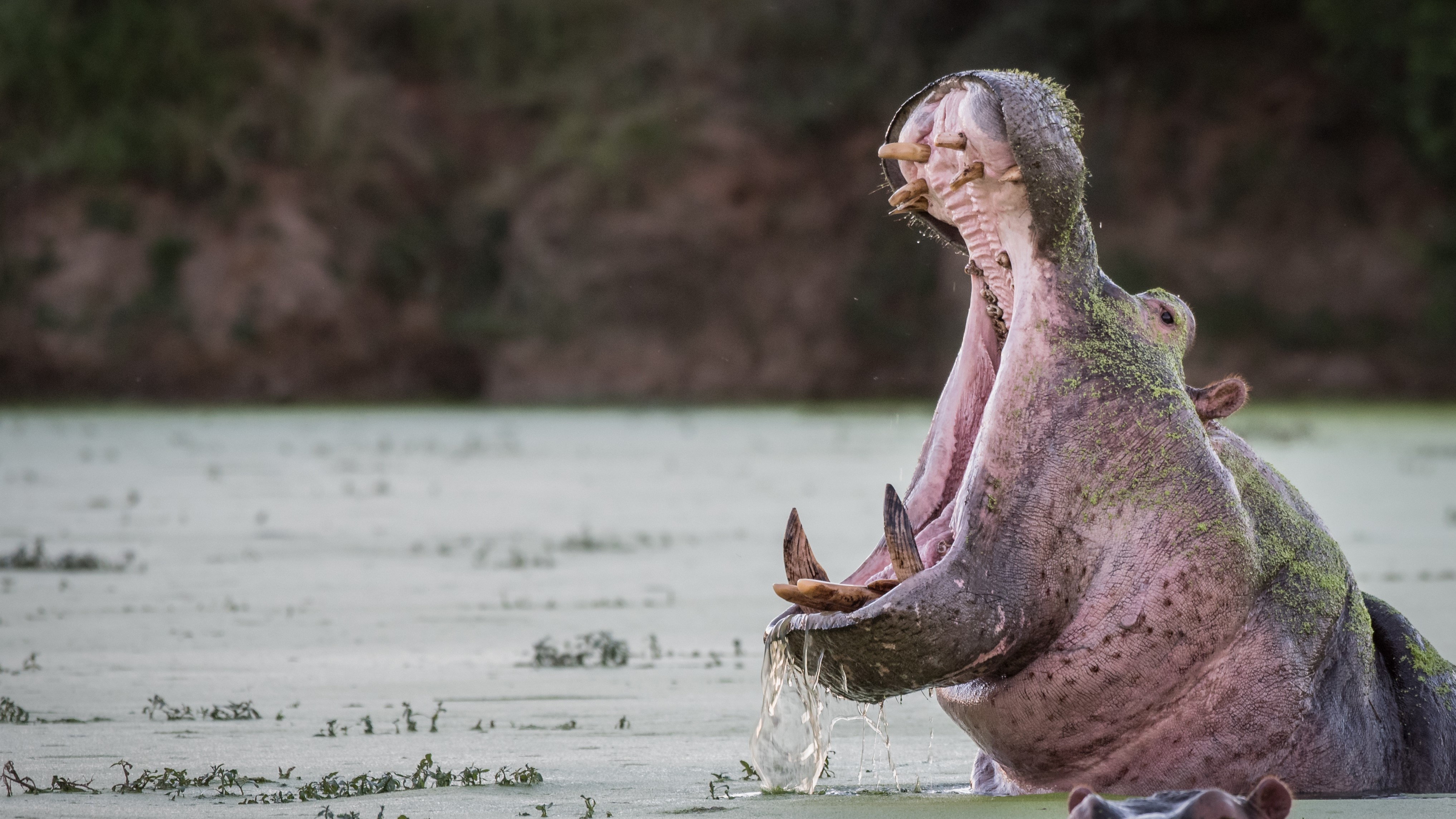
Hippopotamus are the world's most deadly land mammal, killing on average 500 people a year in Africa — more than lions and other apex predators.
Despite their ungainly size — male bull hippos can weigh up to 4,552 lbs (2,065 kg) — the common hippo is an aggressive and territorial wild animal that can charge at short speeds up to 20 mph (32 km/h on land and 8 mph (13 km/h) in water, making them incredibly dangerous to humans, according to San Diego Zoo Wildlife Alliance.
Hippos (Hippopotamus amphibius) also have sharp teeth and are known to capsize boats in farming and fishing wetlands. The BBC reported an attack by a hippo in 2023 that capsized a boat in Malawi and killed one child.
Pressure on natural resources has caused hippo-human conflicts to increase, according to a 2023 study that looked at hippos' impact on farmers and hippo conservation in Ethiopia. A separate 2024 study found that the loss of habitat and growing human populations posed an increasing threat to hippos.
Lions
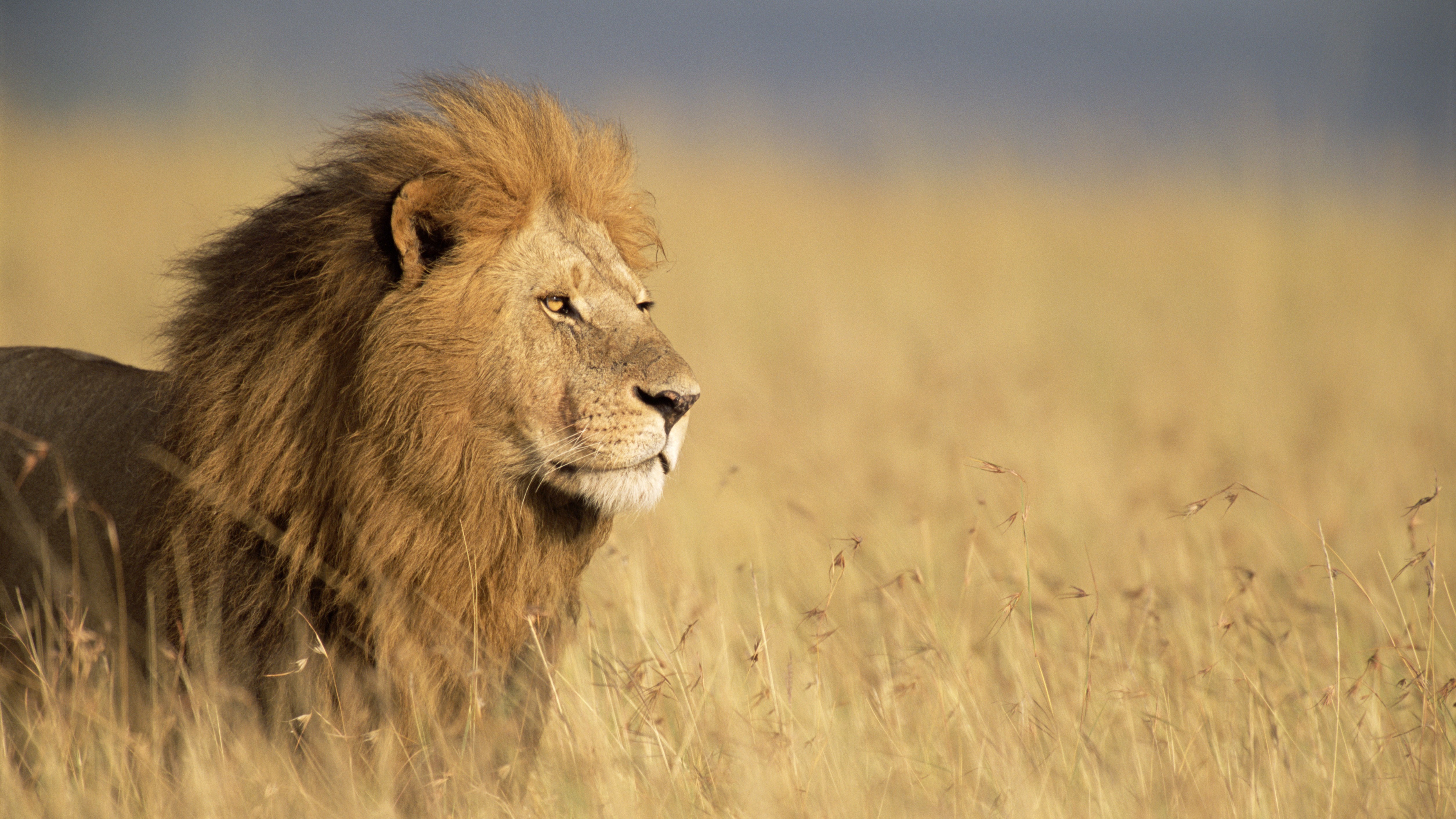
A fierce, big cat, the lion can be aggressive to humans, attacking and killing using sharp teeth and claws when it feels threatened and to protect its young. The lion's (Panthera leo) roar is a ferocious and distinctive sound that can reach up to 114 decibels, striking fear into its prey.
Despite the danger posed by lions to humans, lion-human conflict is placing lion populations at increased risk in Africa when humans retaliate. In a 2023 study, researchers reported that 282 humans were attacked by lions between 1950 to 2019. Another study published in 2005 found 563 people have been killed by lions in Tanzania since 1990.
According to a 2021 study, increasingly negative interactions between farming communities and lions, which prey on livestock, are causing lions to be persecuted and killed. RTI International reported that in northern Tanzania since January 2022, six people have been injured and two people killed by lion attacks, with five lions killed by the community.
Saltwater crocodiles
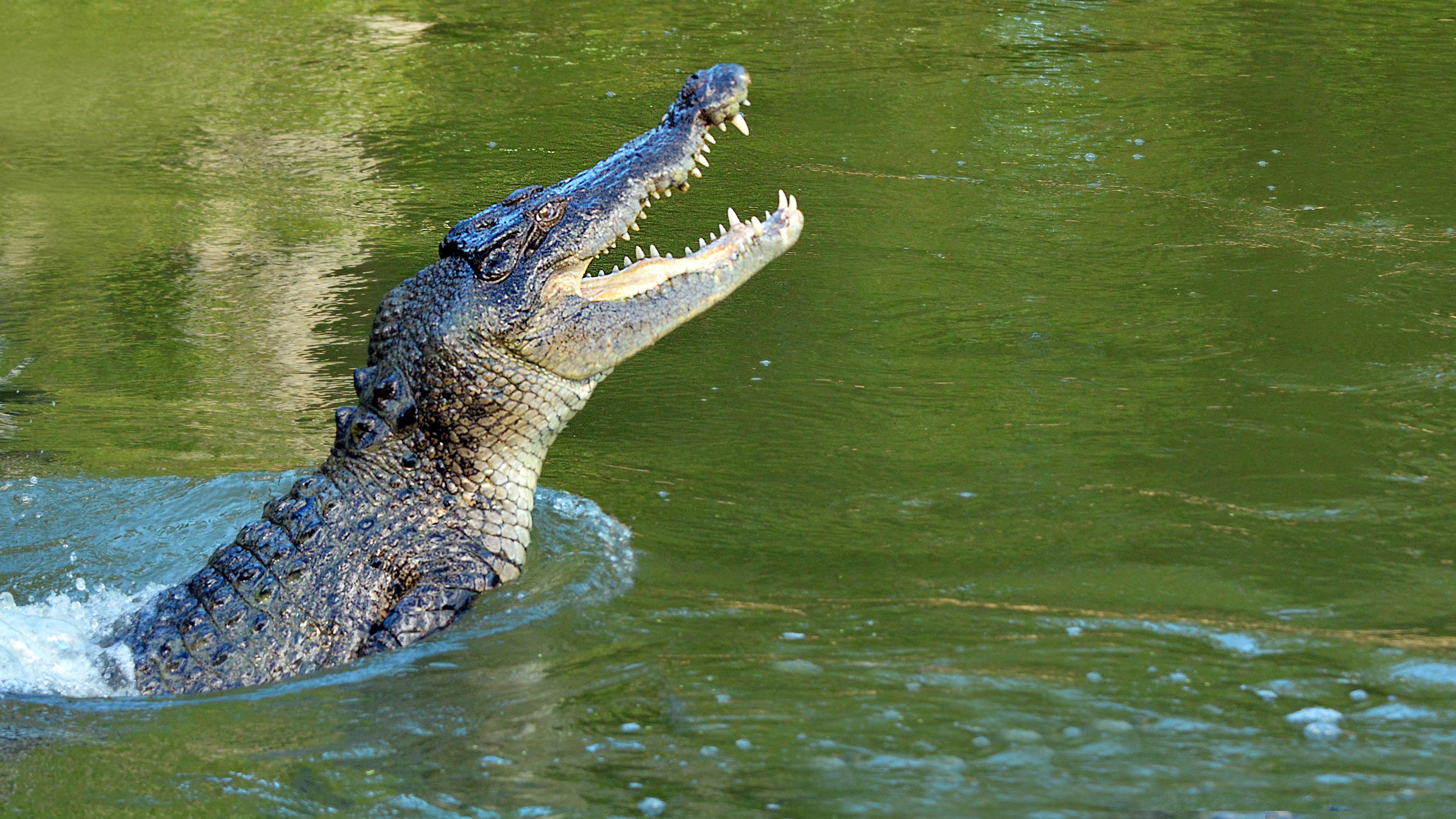
Crocodiles are opportunistic killers, generally do not seek humans out as prey and mostly attack to defend their territory. However, with their powerful jaws and razor-sharp teeth, crocodile attacks on humans are often fatal, with an estimated 1,000 people killed worldwide a year by crocodiles, according to the Ocean Conservancy.
The saltwater crocodile (Crocodylus porosus) is the world's largest living reptile and the most dangerous to humans. It has the most ferocious bite force of all living animals, at 3,700 pounds (16,460 newtons), scientists found in 2012 — twice as strong as a great white shark. As a result, it is rare to survive a saltwater crocodile attack.Most people are attacked while wading or swimming in shallow murky waters in Australia and Indonesia.
In a statement, study author and professor of anatomy and vertebrate paleobiology curator, Gregory M. Erickson said: "The noise of the jaws coming together was like a gunshot. The power of the animal was astounding, and the violence of the event frightening."
Assassin bugs
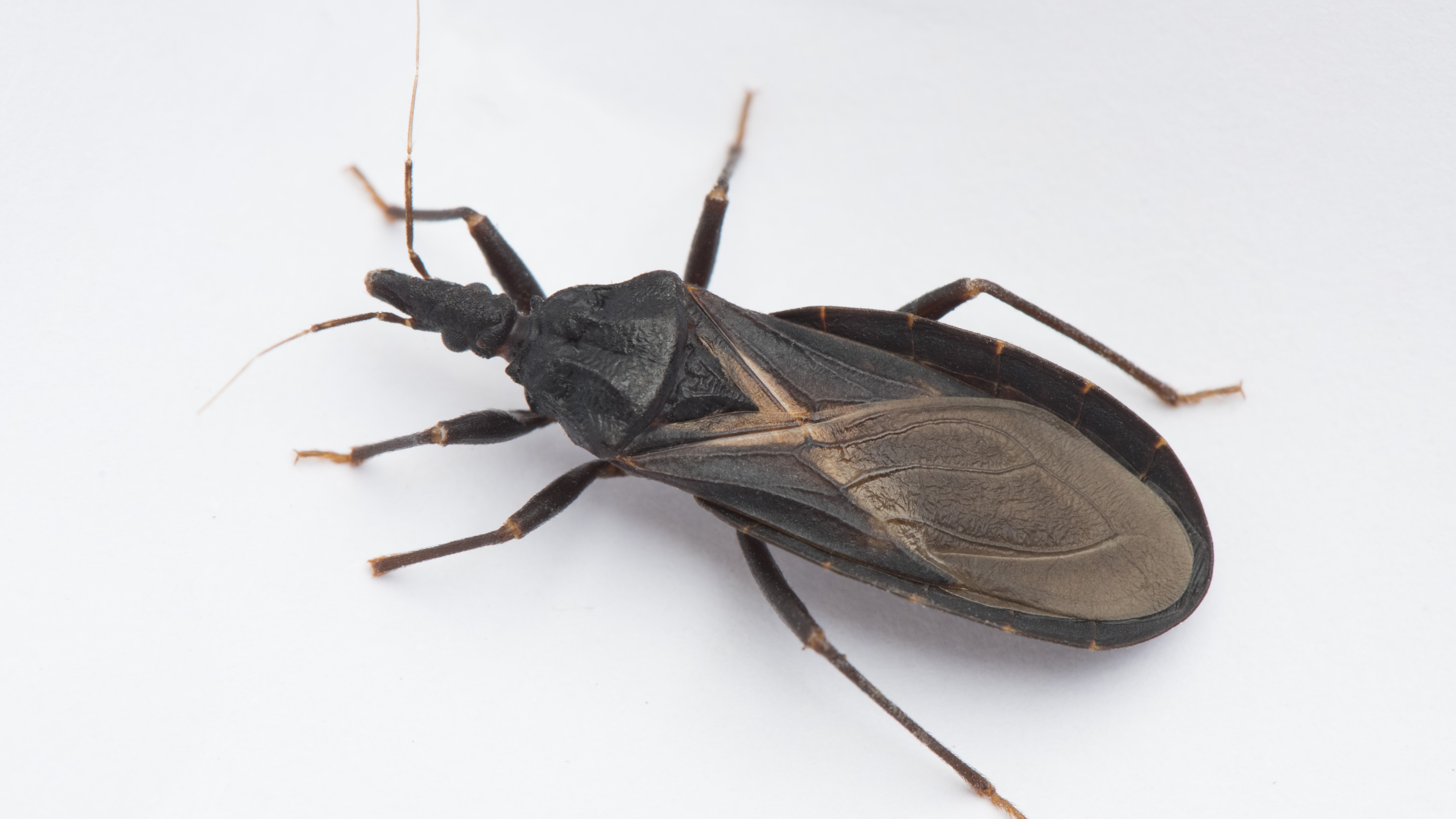
The bite of an assassin bug, which belongs to the Reduviidae family and is also known as a "kissing bug," is intensely painful. It is also dangerous to health, as some species carry the tropical parasite Trypanosoma cruzi, which the bugs defecate onto the skin after biting their victim. Chagas is an inflammatory disease that can cause cardiac and digestive complications resulting in death if untreated. In 2024, the WHO reported that 6 million to 7 million people worldwide are currently infected with Trypanosoma cruzi, although many people will be asymptotic during the acute phases of infection, according to UCLA Health.
Chagas is estimated to kill 10,000 people worldwide each year. Infected assassin bugs found mostly in Central and South America and Mexico, although cases have been reported in North America.
Assassin bugs (Narvesus carolinensis) are most active at night and tend to feed on animal blood, but if they encounter humans, they are known to bite people's face around the lips and eyes while they sleep.
Elephants
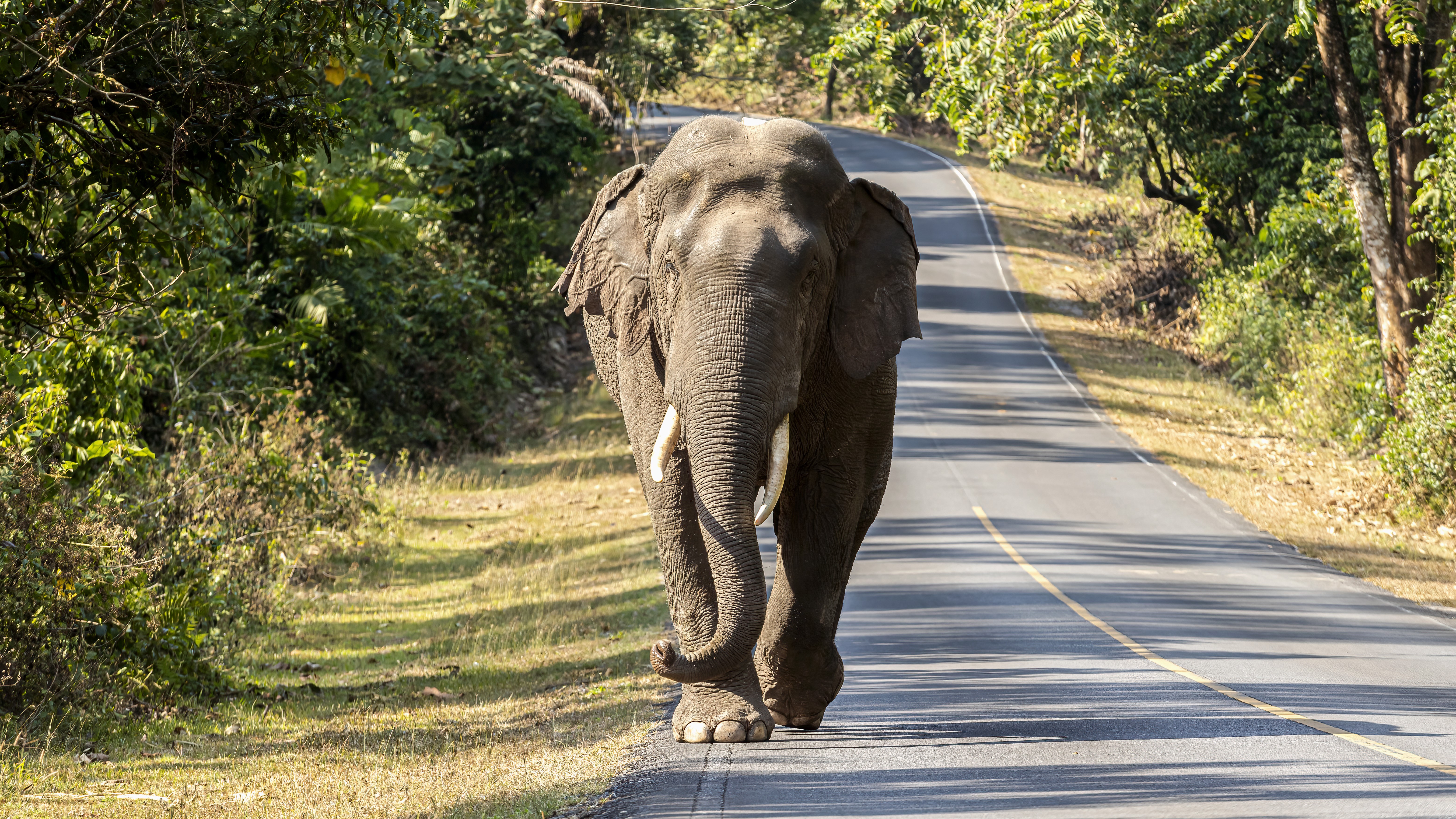
The sheer size and strength of this large land mammal can make both the African elephant (Loxodonta Africana) and Asian elephant (Elephas maximus) a danger to human life. In rural communities, there have been reports of elephants raiding and tramping villages and displaying aggressive behavior toward humans when they feel threatened. In India, around 400 people die each year from elephant attacks. A 2019 report found that elephant-human conflict is often caused by increasing competition for natural resources, putting elephant populations at risk.
According to South African National Parks, although elephants are mostly peaceful animals, they will charge at speed when threatened or to protect their young.
Tsetse flies
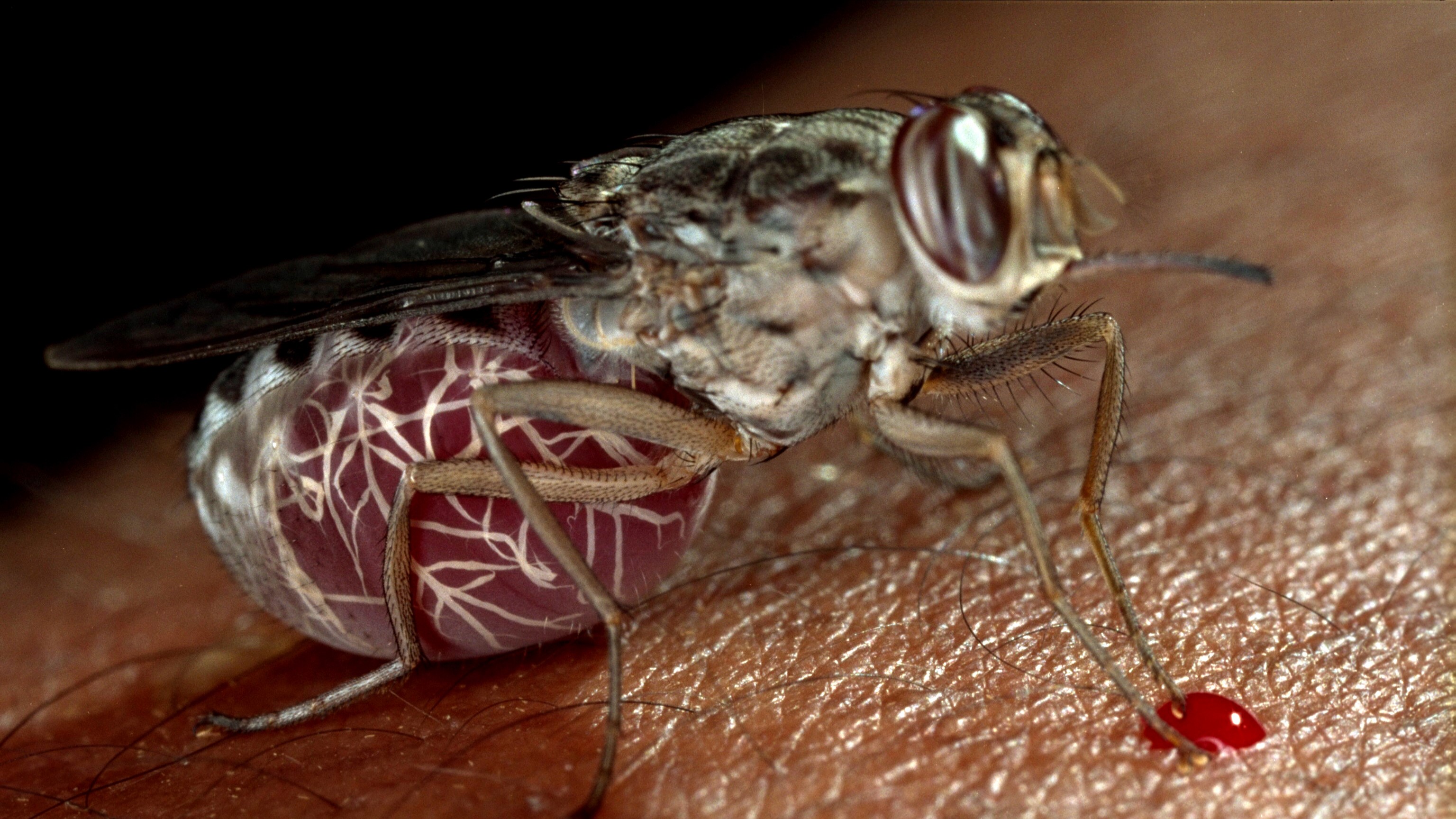
This small, blood-sucking insect is around the size of a house fly, but its bite is far more deadly. Some of the 34 species and subspecies of tsetse fly carry a parasitic disease known as African trypanosomiasis. Nicknamed "sleeping sickness," symptoms include swelling of the brain, headaches, vomiting and insomnia. Around 50,000 people die from the disease each year in sub-Saharan Africa.
Medical interventions to control the disease have reduced the number of cases in recent years, according to the WHO, although sleeping sickness cases increased during the COVID-19 pandemic.
Researchers in 2017 found that the tsetse fly uses its proboscis and sharp teeth to penetrate the skin and suck blood.
Ascaris roundworms
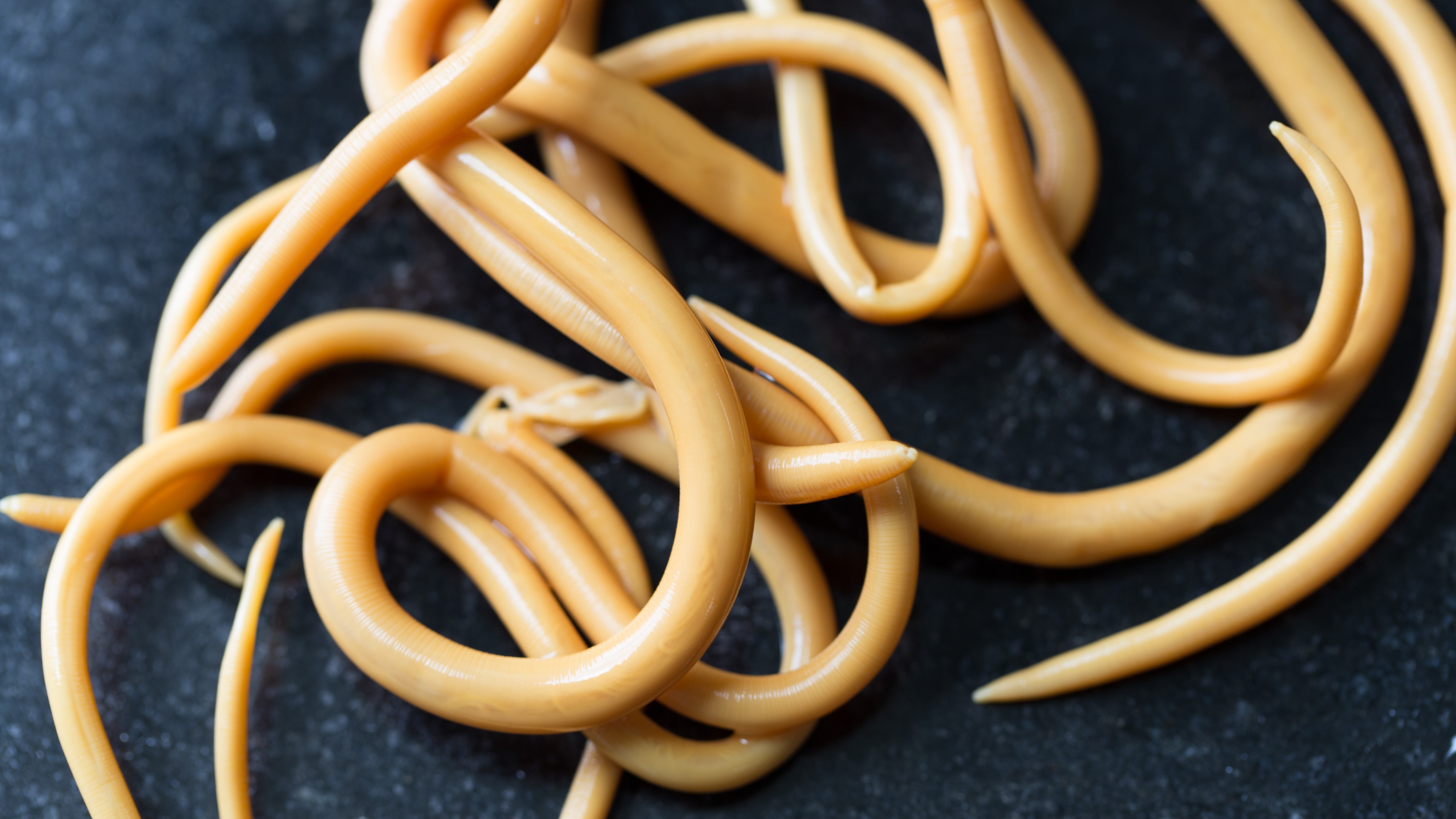
Another parasite that spreads disease and can cause the death of the human host is the roundworm Ascaris lumbricoides. Found in developing countries, ascariasis is one of the most common parasitic infections found worldwide, with a 2014 study reporting 60,000 deaths per year from the disease.
Ascaris roundworms are transmitted to the host after their eggs are accidentally ingested in food or water contaminated by human feces. After being transmitted, the Ascaris roundworm moves down to the small intestine and feeds off the human body before reproducing, causing the deadly disease known as ascariasis.
Indian red scorpion
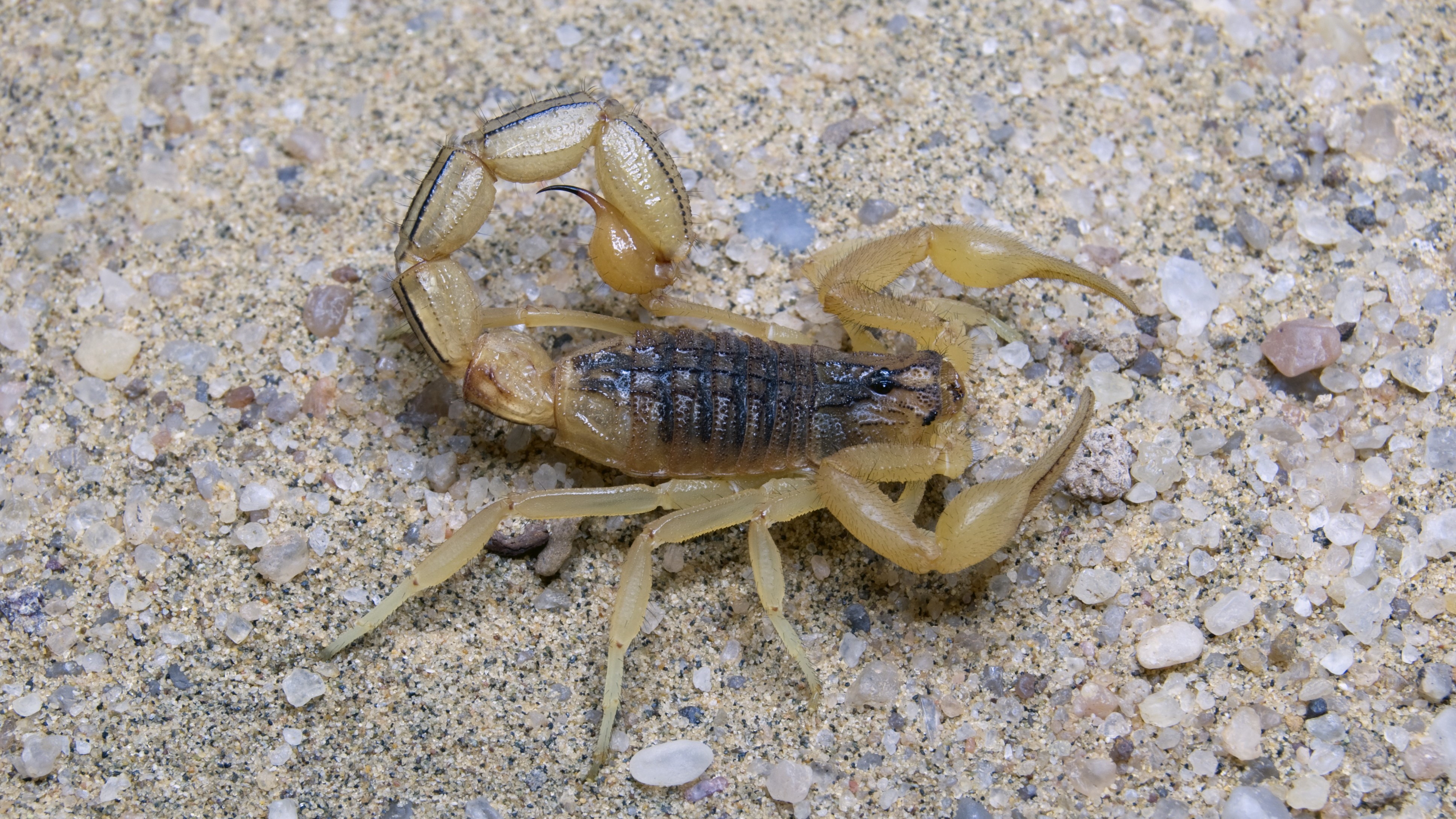
The sting of any scorpion species will hurt — a lot — but the Indian red scorpion (Hottentotta tamulus) is the most dangerous scorpion in the world. The Indian red scorpion sting is filled with a potent neurotoxin venom, which can cause swelling, pain and eventually cardiac failure, resulting in death within 72 hours without medical treatment, according to scientists.
Found in India, Sri Lanka and Nepal, the Indian red scorpion mostly tries to avoid human encounters but will sting if it feels threatened. Most victims are children from rural communities.
Bull sharks
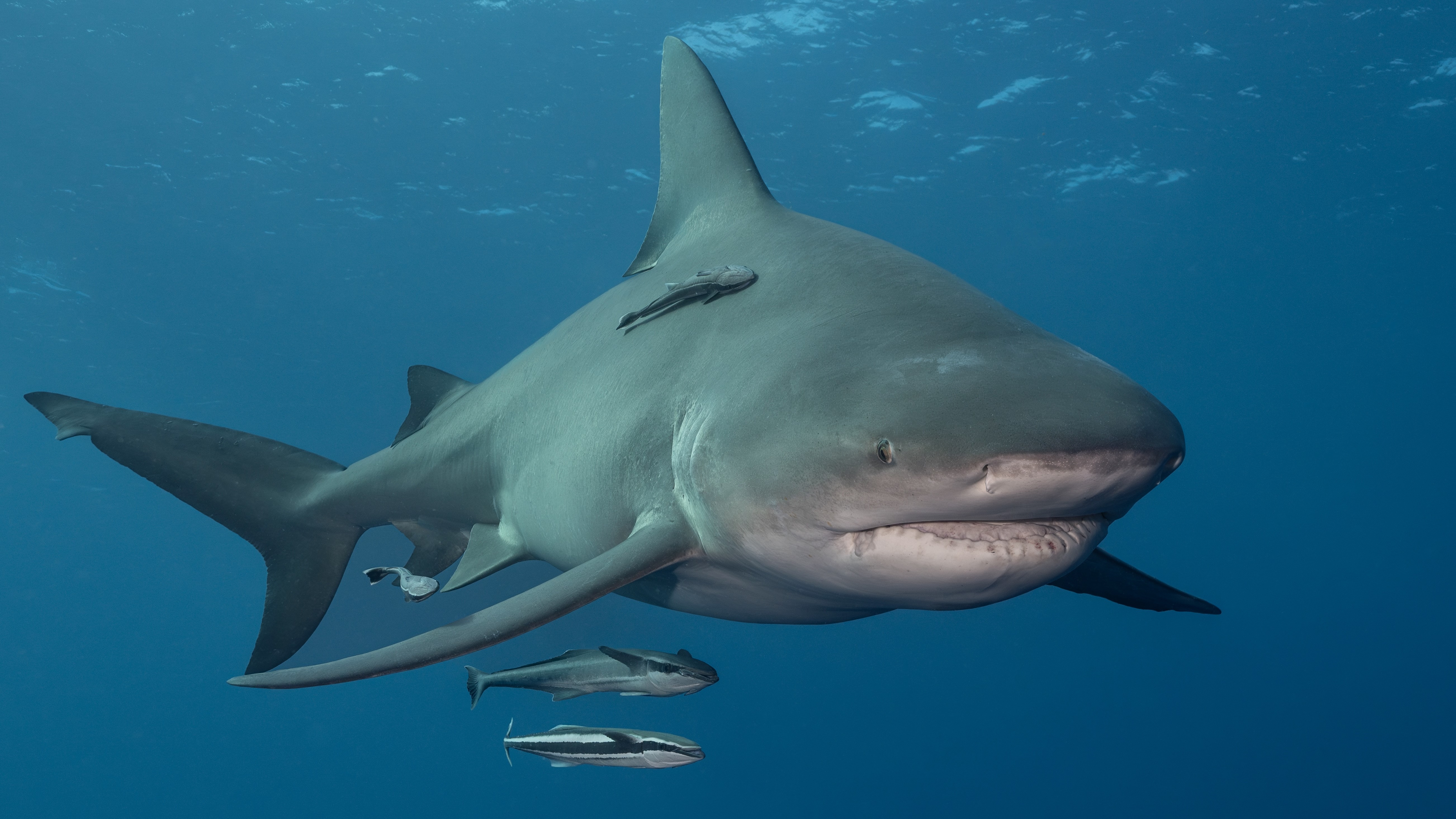
With a short, blunt snout and a mouth filled with 350 razor-sharp teeth, the bull shark (Carcharhinus leucas) is one of the most dangerous shark species found in the world. It is known to be aggressive towards humans and can attack unprovoked.
It poses a particular risk to human life, because it inhabits tropical shorelines in densely populated areas in Australia, the East Coast of the United States and the Gulf of Mexico. In 2024, 29-year-old Lauren O'Neill was attacked while swimming in Elizabeth Bay by a bull shark.
The bull shark is the only shark species that can survive in freshwater for long periods of time, because its kidneys and glands have uniquely adapted to retain salt. Bull sharks prefer shadowy or murky waters, where they exhibit "countershading," a natural camouflage that enables them to blend into surroundings before surprising prey, making them a deadly predator.
Redback spiders
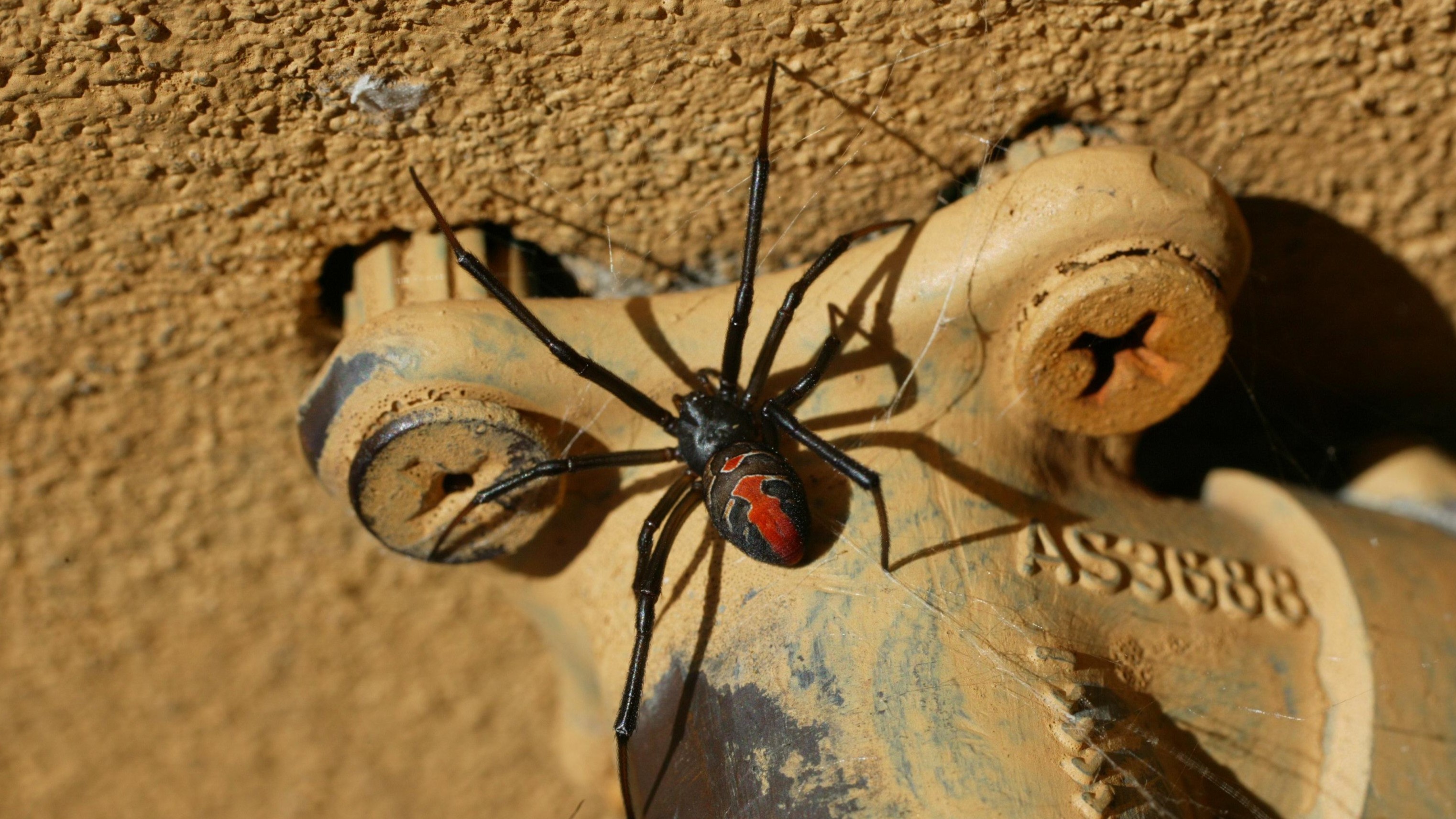
The redback spider, also known as the Australian black widow, is a highly venomous spider species that can be deadly to humans or other animals if bitten. Like venomous snakes, it carries a neurotoxin venom that attacks the nervous system and causes severe pain and serious illness if the victim is left untreated with Latrodectus antivenom.
Redback spiders (Latrodectus hasselti) are commonly found throughout Australia, and it is the larger female spiders that tend to bite. According to the Australian Museum, around 250 people a year are treated for redback spider bites. However, since the introduction of antivenom, no deaths were recorded from 1955 until 2016, when a 22-year-old hiker was bitten and died from infection complications.
African crested rats
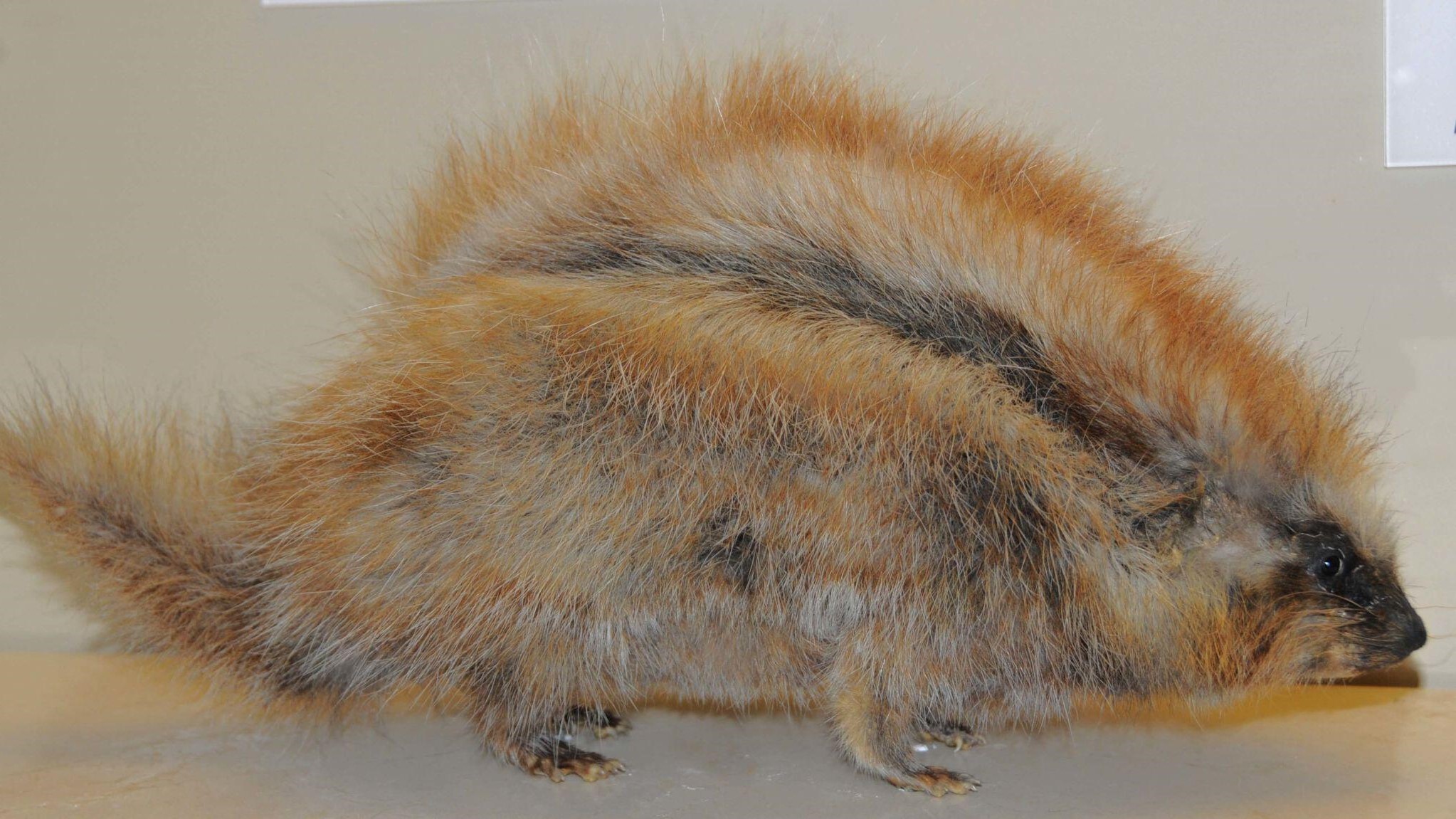
These little rabbit-size furballs might look harmless, but the hair of African crested rats, also known as maned rats, is packed full of potent toxins that are powerful enough to kill a human.
A 2020 study found that African crested rats (Lophiomys imhausi) take poison from the Acokanthera schimperi plant and chew and mix its bark with their saliva before coating their fur with it through grooming. Scientists found that the rats appear to be resistant to the poison and store it as a deadly protective mechanism.
Box jellyfishes
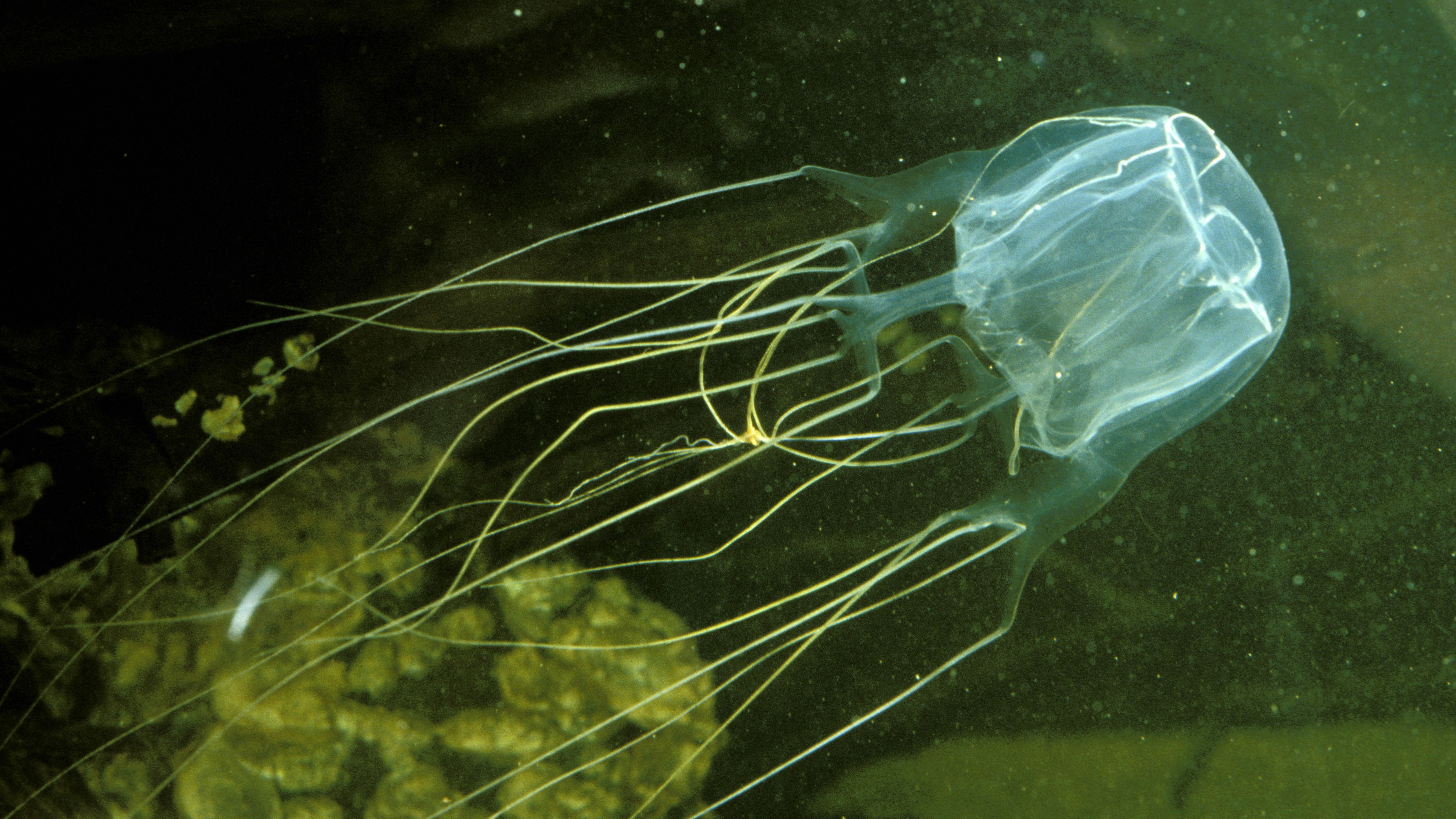
Box jellyfish have long tentacles packed with deadly venom. A sting from a box jellyfish (Chironex fleckeri) is not only intensely painful, but a severe sting can also be fatal.
According to the National Ocean Service, each box jellyfish tentacle contains tiny darts, known as nematocyst cells, loaded with poison that it uses to sting and pierce the skin, shooting fast-acting poison directly into the bloodstream. Symptoms of a sting can include paralysis, swelling and cardiac failure. Despite the risk, deaths from box jellyfish remain low in Australia. An Australian teenager in 2022 was the first recorded fatality since 2006. Between 20 to 40 people a year die in the Philippines from box jellyfish stings.
The Australian box jellyfish is one of the most venomous marine animals in the world, and it's found in coastal waters in northern Australia and the Indo-Pacific region.
Cone snails
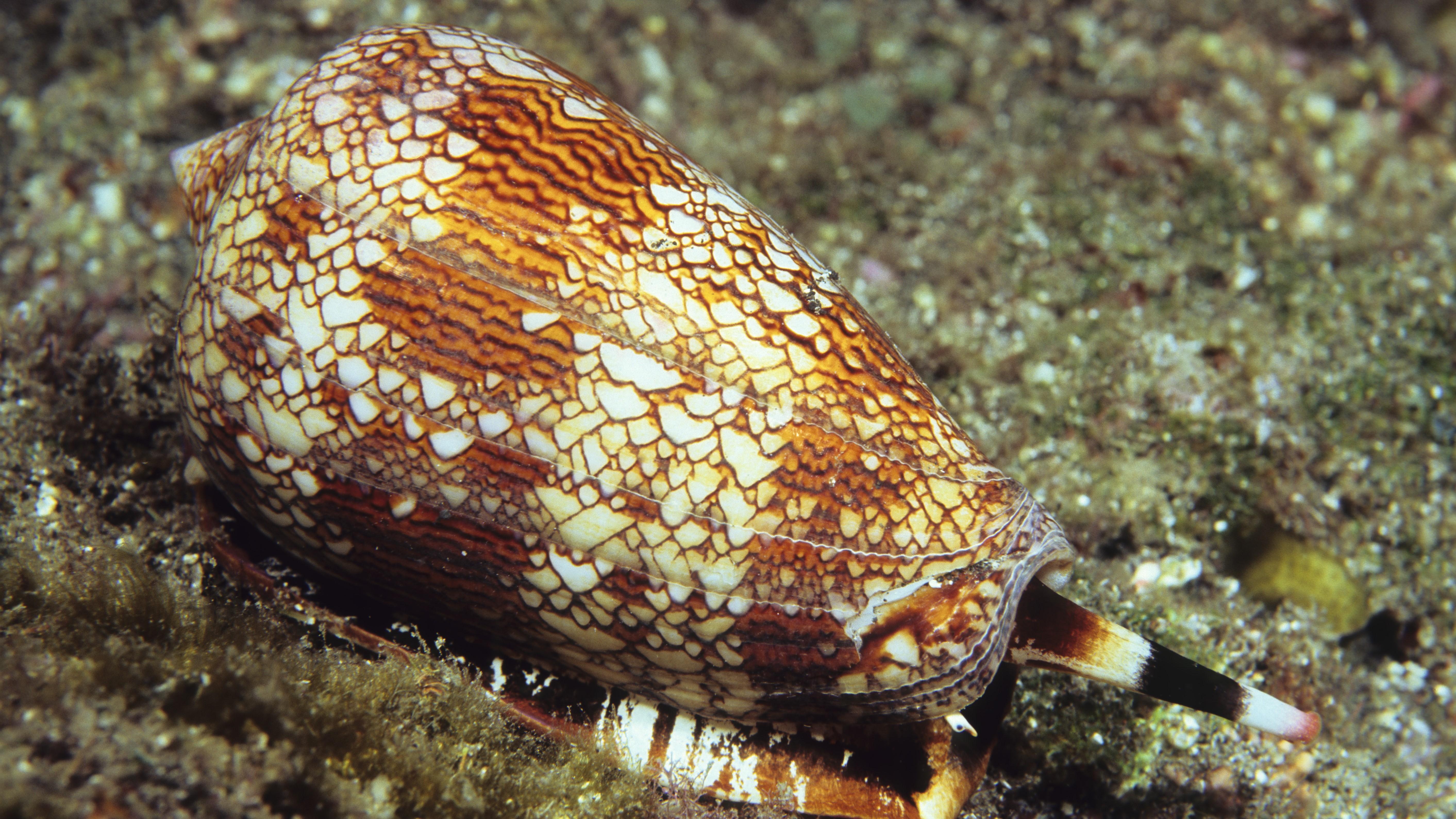
A harmless-looking snail with an attractive cone-shape shell, the cone snail is surprisingly deadly. It's complex, paralytic venom is fast-acting and highly toxic. Although humans aren't the intended prey for carnivorous cone snails, which feed on small fish and worms, divers can be at risk, because the snail lives in shallow waters and coral reefs and can penetrate neoprene wetsuits and gloves.
There are approximately 700 species of cone snail, with only a small number of these venomous enough to kill humans. The geography cone (Conus geographus) is considered the deadliest. This tiny, aquatic snail contains more than 100 toxins — enough to hypothetically kill 700 adults.
Golden poison frogs
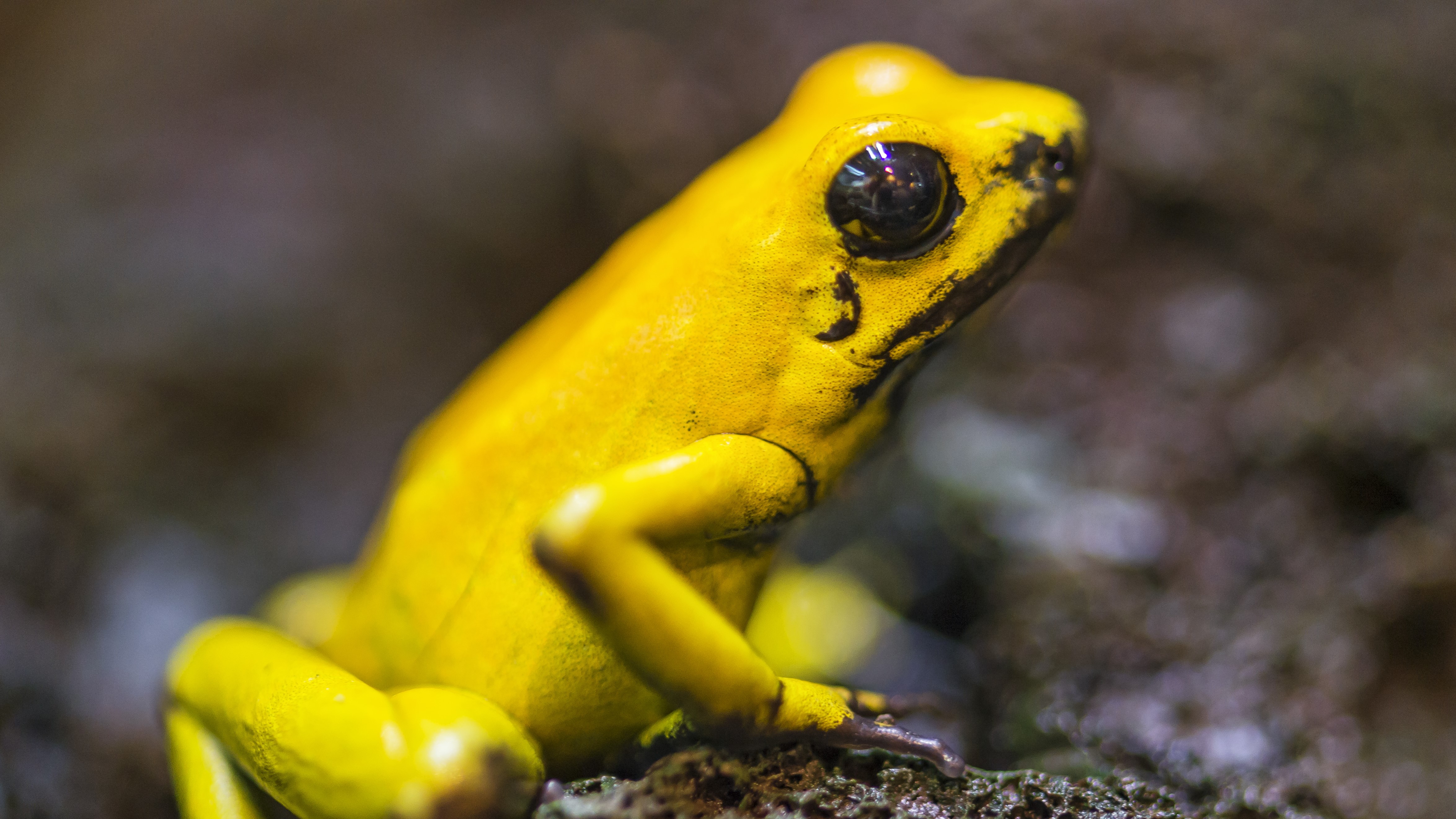
This vibrantly-colored frog is one of the most poisonous and deadly animals in the world. Whereas some of the 100 species of poison dart frogs use camouflage to blend into their surroundings and avoid detection, the golden poison frog displays its brightly-colored skin to warn predators of its toxicity.
The golden poison frog is loaded with a lethal dose of batrachotoxin in their skin glands, which makes them deadly to touch. Scientists have found that the golden poison frog (Phyllobates terribilis), contains enough poison to kill 10 people — in less than 10 minutes.
In a 2023 study, scientists identified the protein used by the frogs to accumulate toxins without poisoning themselves, which could lead to the development of new antidotes to treat humans.
Cape buffalo
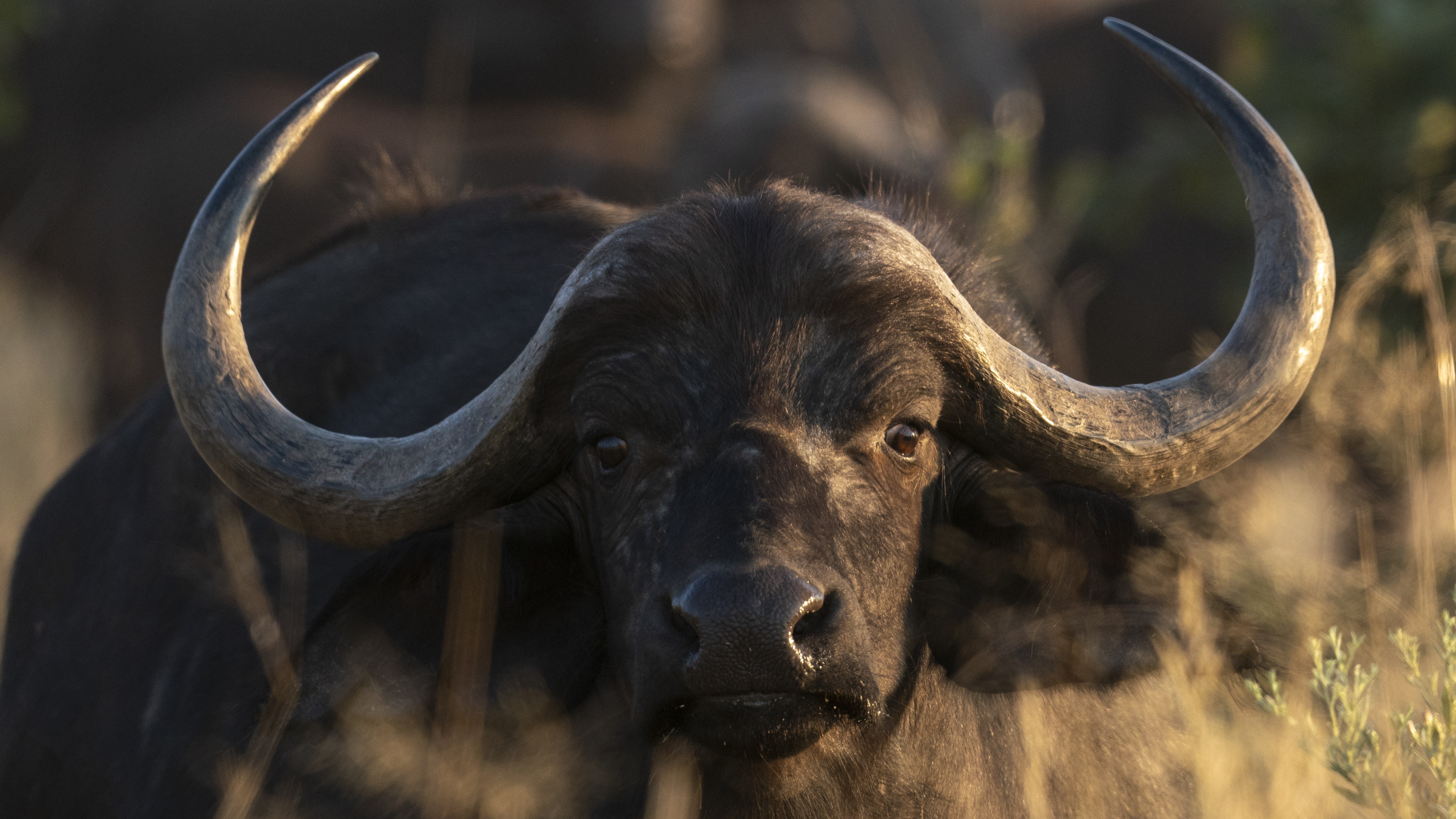
The cape buffalo is the largest and most common savanna buffalo and one of four subspecies of the African buffalo. It lives in large herds in grasslands and is considered one of the "big five" most dangerous game animals to hunt in Africa, with hunters often injured or killed in the hunt.
The cape buffalo (Syncerus caffer) is a notoriously aggressive and unpredictable animal that can charge at speeds of up to 37 mph (60 km/h), according to the Denver Zoo.
Pufferfishes
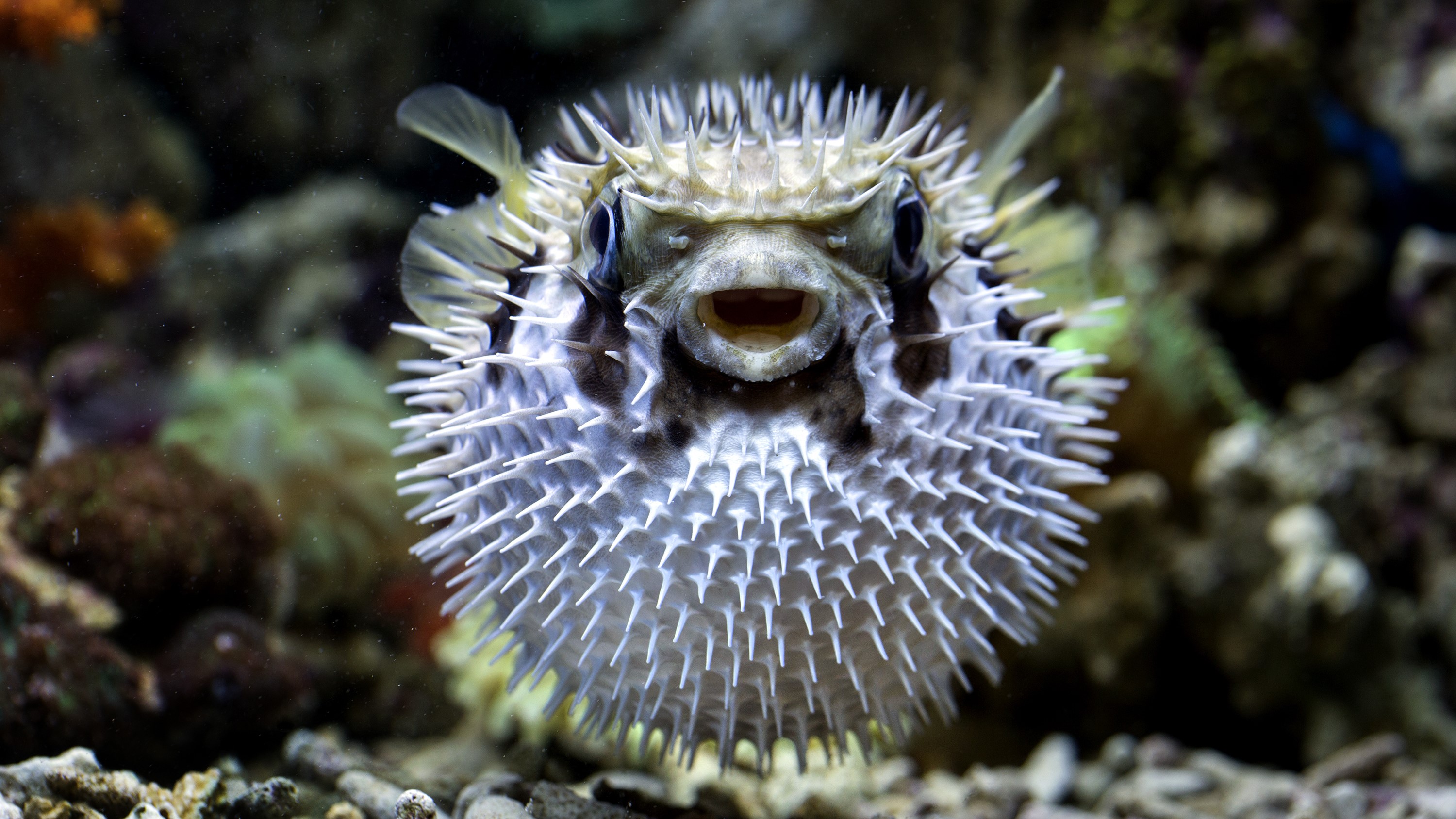
Eaten as a rare delicacy in Japan and China, pufferfishes, also known as "fugu," are toxic fish that contain potent levels of a lethal neurotoxic called tetrodotoxin (TTX) in their skin, intestine, liver and ovaries that must be carefully cut out by chefs to avoid killing the diner.
There are around 200 species of pufferfish, and nearly all are poisonous. Scientists have found that while all species inflate and use their sharp spines as a defence mechanism, their poison provides extra protection against predators.
According to the Singapore Food Agency, ingesting just 0.002 g of the toxin can be fatal to humans, making tetrodotoxin 1,000 times more deadly than cyanide. Symptoms of poisoning include paralysis, breathing difficulty and cardiac failure.
Brazilian wandering spiders
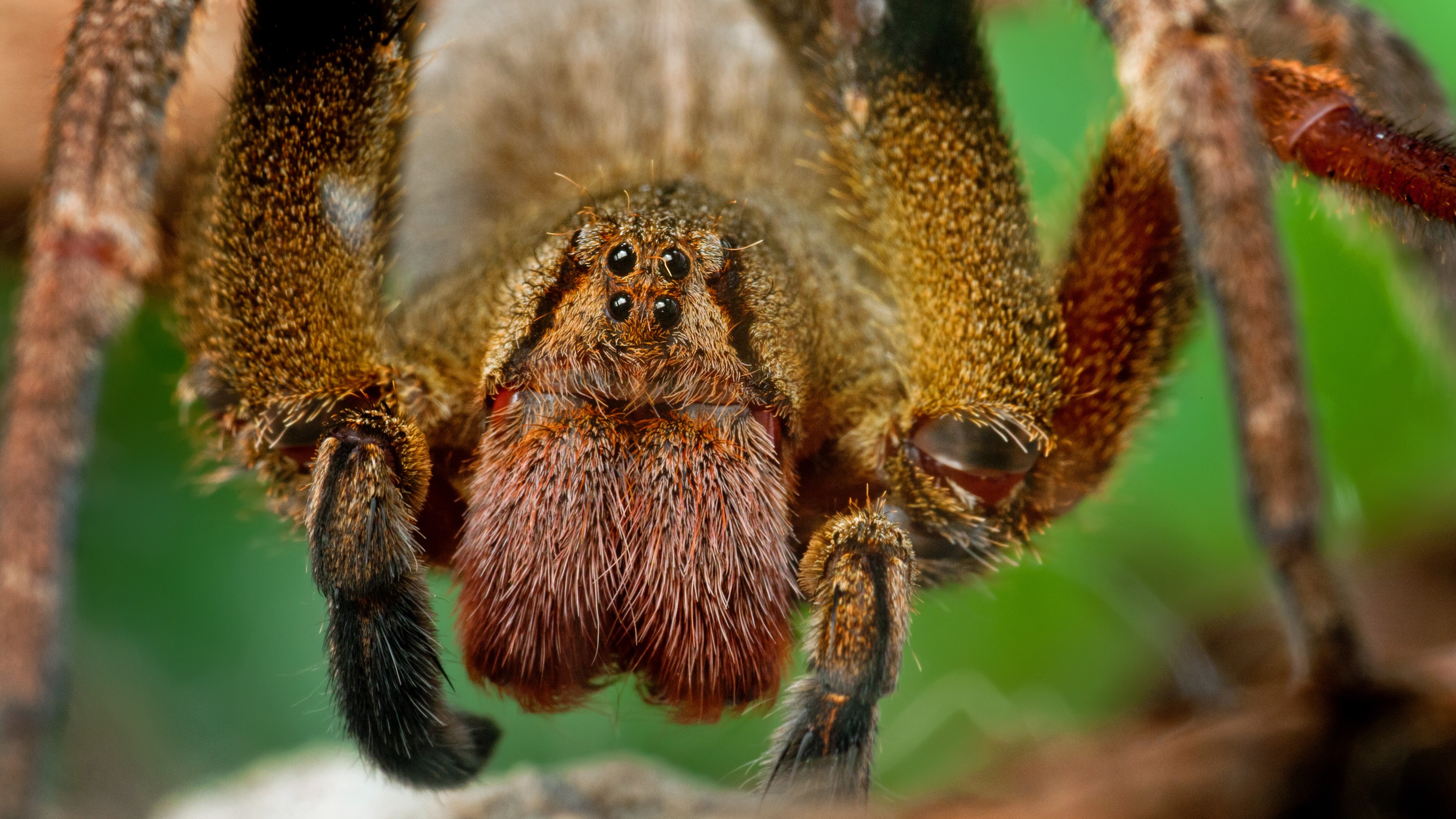
One of the deadliest spiders in the world, the Brazilian wandering spider, has a potent bite loaded with neurotoxic venom that can be fatal to humans. Belonging to the genus Phoneutria, which means "murderess" in Greek, there are nine species of Brazilian wandering spider, also known as armed or banana spider.
A bite from one of these venomous spiders is intensely painful and requires an antivenom to survive.. Death from a bite is more common in children and the elderly, but rarely in treated adults, found researchers in a 2018 study. Four thousand bites occur each year in people in Brazil. Symptoms include hypertension, vomiting and sweating.
Blue-ringed octopuses
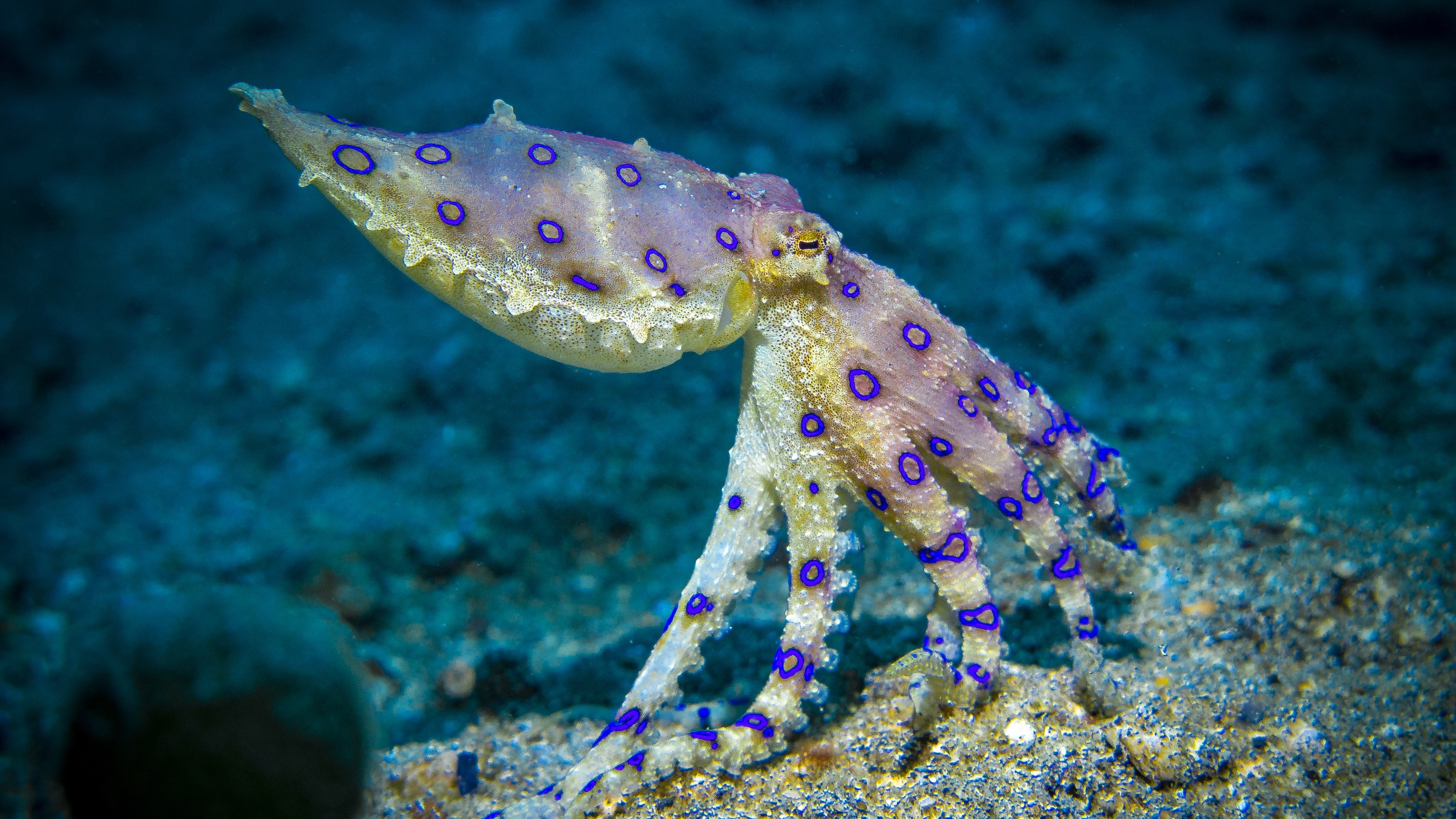
A small but deadly cephalopod that can fit in the palm of your hand, the blue-ringed octopus contains a potent neurotoxin known as tetrodotoxin. A sting containing even tiny doses of the toxin can paralyze and kill humans within minutes, and there is no known antidote.
All four species of blue-ringed octopuses (Hapalochlaena) are toxic. A 2019 study of blue-ringed octopuses in Japanese coastal waters found that the most toxicity was recorded in the salivary glands.
Freshwater snails
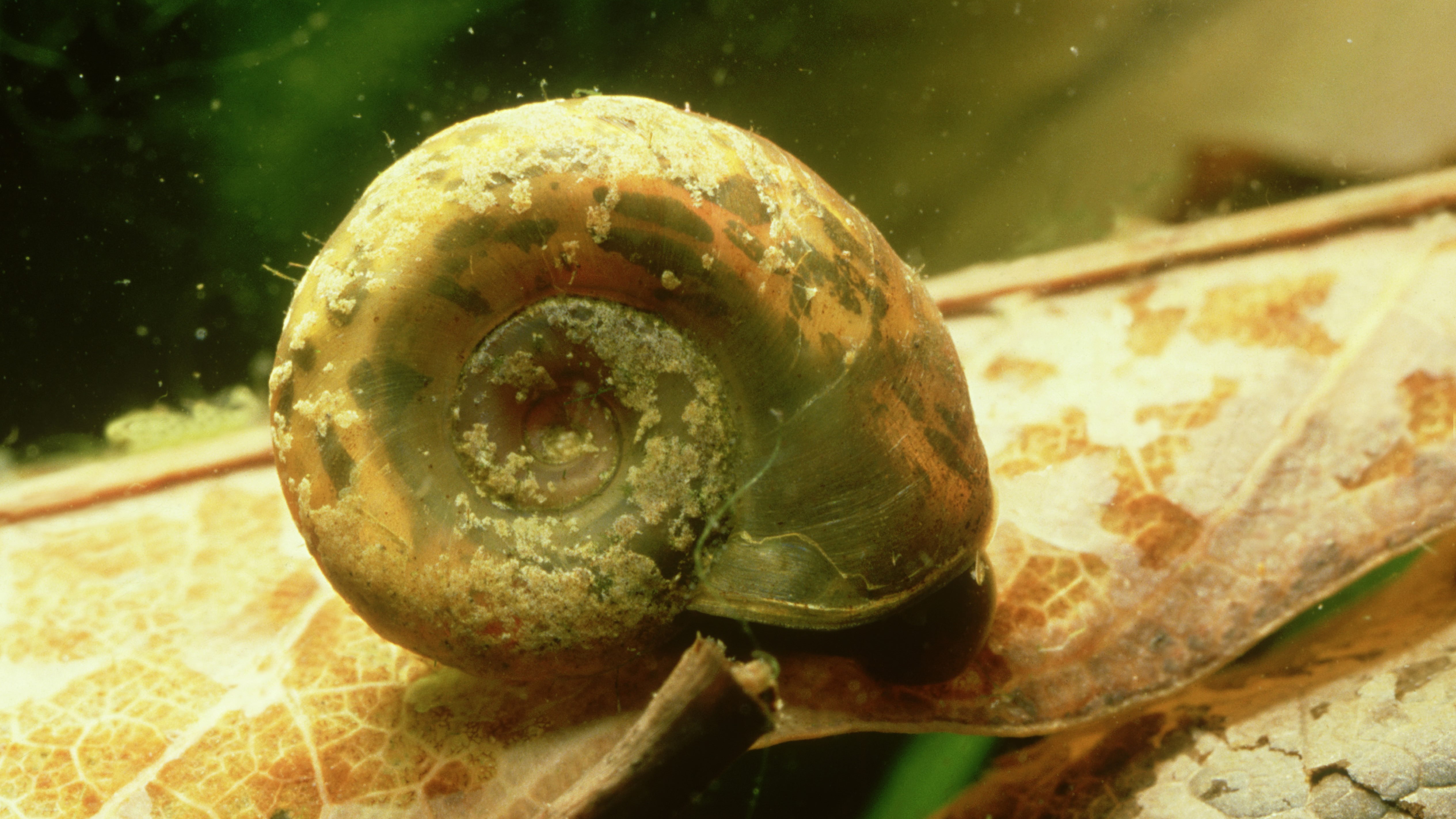
Freshwater snails are small but deadly gastropod mollusks that live in freshwater. Although the snails themselves aren’t dangerous, they can harbor a deadly parasitic flatworm known as a fluke.
The parasite causes the water-borne disease schistosomiasis, which is contracted by ingesting contaminated water or by the fluke eggs penetrating the skin during wading or swimming in contaminated water. The parasite Schistosoma lives and develops on the freshwater snail before being transmitted to the new human or animal host.
Children are particularly vulnerable to the disease. The WHO reported that more than 250 million people required treatment for schistosomiasis in 2021 and estimated that there were 11,792 deaths globally per year from the disease.
Common vampire bats
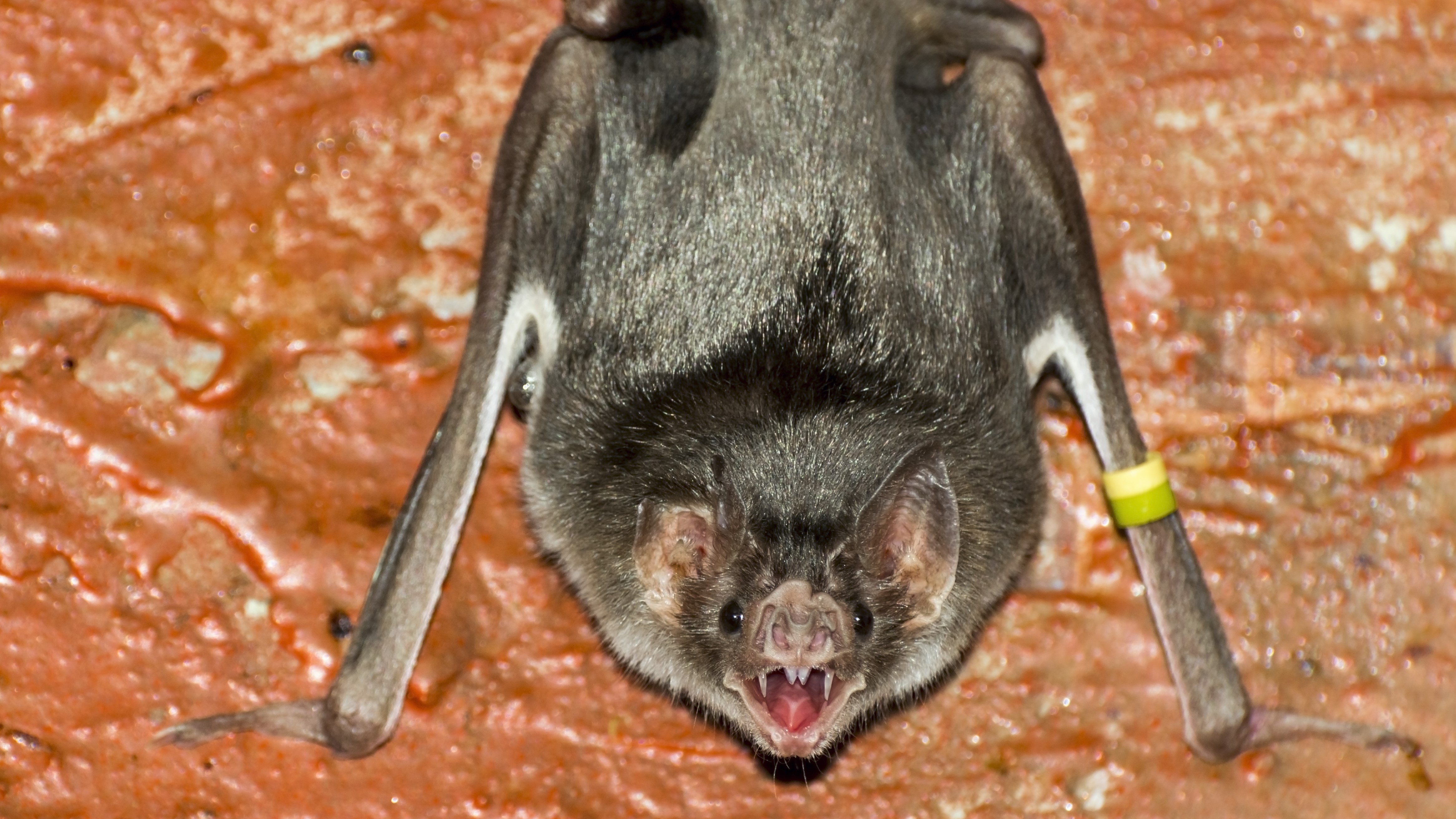
The common vampire bat (Desmodus rotundus) is a sanguivorous bat species found in northern Mexico, central Chile and Argentina that feeds exclusively on blood.
Common vampire bats are known to bite humans, and often carry zoonotic diseases or infections that transfer to humans, including rabies and COVID-19. It's estimated that 960 humans per 100,000 people die annually in South America from diseases spread by vampire bats.
Bats play a significant role in the emergence of new zoonotic infections in developing countries. The 2022 database of common bat reports recorded incidences of vampire bats attacking people, with adult males bitten more frequently than females or children. In 2001, common vampire bats were also recorded preying on villagers living in a remote Amazon region of Brazil.
Great white sharks
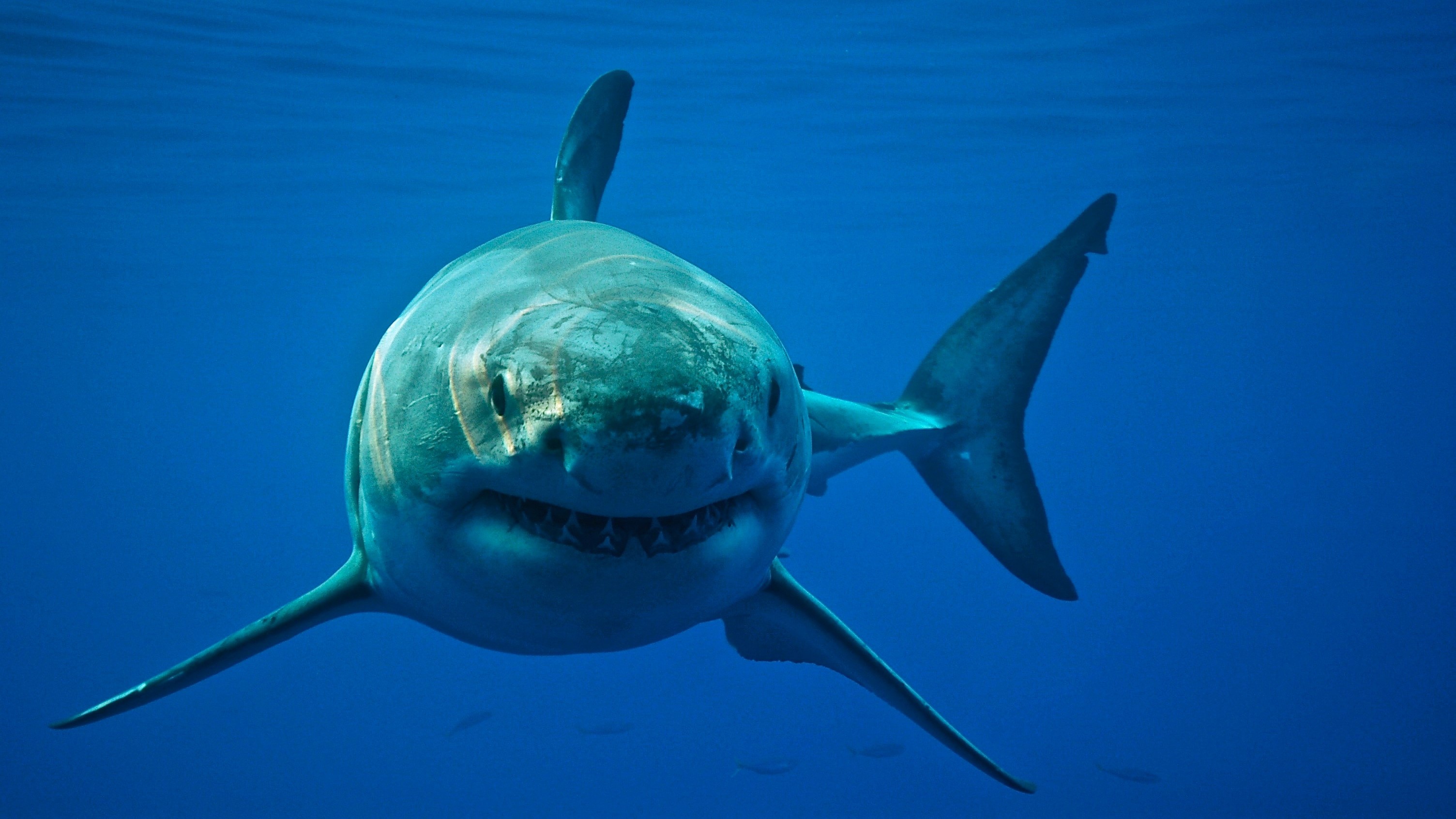
The world's largest predatory shark, the great white, is a powerful and fast mackerel shark species from the Lamnidae family. These sharks occasionally attack humans, although fatalities are rare. Scientists report that the sharks don't generally see humans as food.
Despite this, in 2023, a worldwide increase in shark attacks was recorded, with the International Shark Attack file reporting 69 unprovoked attacks and 10 fatalities. Four of the deaths reported in Australia were caused by great white sharks (Carcharodon carcharias).
The great white can swim at speeds up to 35 mph (56 km/h) and has around 300 serrated triangular teeth, although only 50 of these are in use at any given time.
Grizzly bears
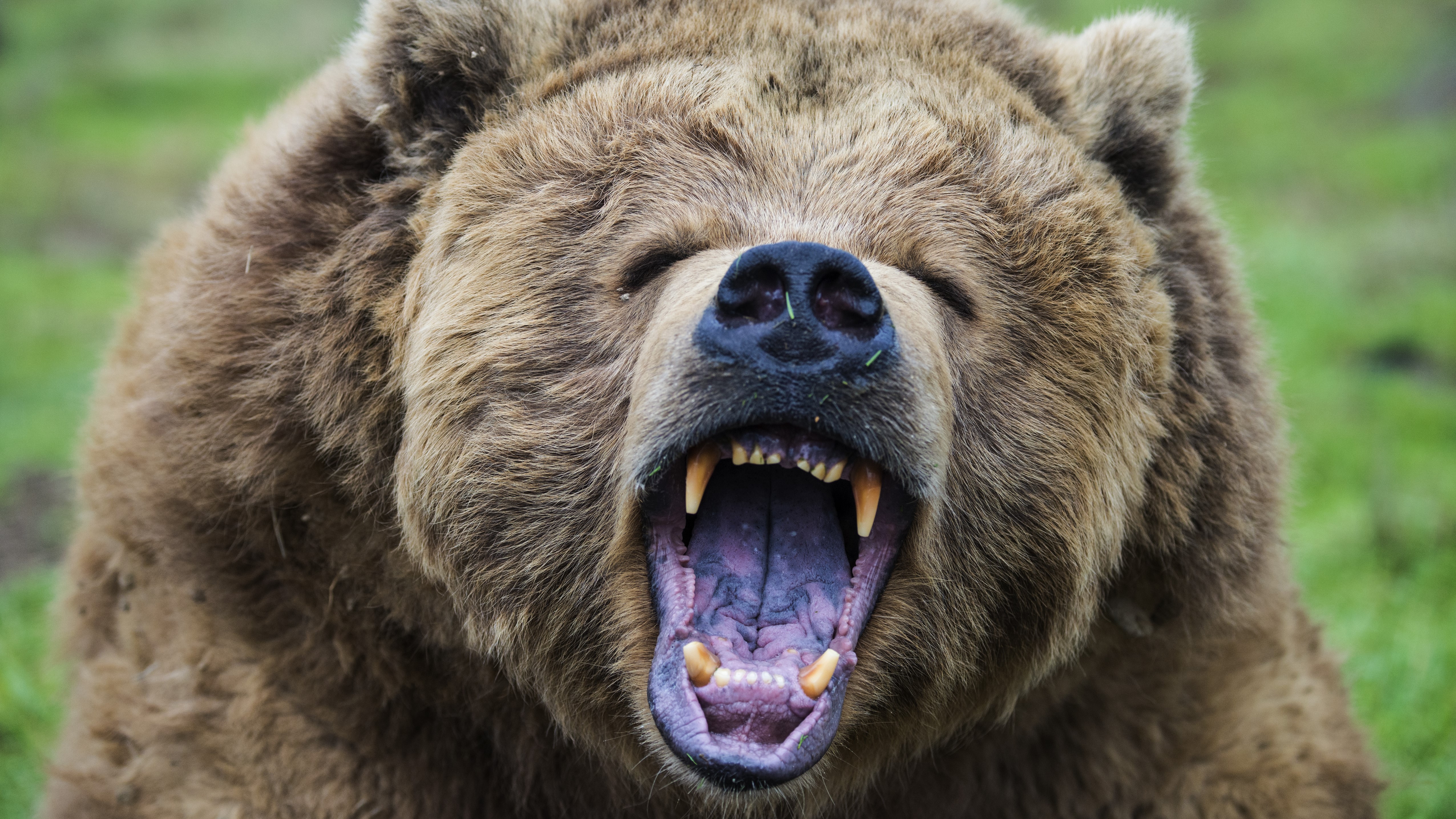
The grizzly bear is a large brown bear subspecies found in North America, and large populations hunt in rivers in Alaska and in the national parks. Grizzlies (Ursus arctos horribilis) are known for being aggressive towards humans — mostly in defense of their young or over food. Human-grizzly bear encounters can be fatal due to their sheer size and strength. A couple and their dog were killed in Canada's Banff National Park in 2023.
Bear attacks remain relatively rare, although a 2019 study reported that brown bear (Ursus arctos) attacks on humans had increased in remote areas as more people venture into nature for recreation. An average of 39.6 attacks are recorded globally per year. Brown bear populations have also rebounded significantly following conservation work.
Wild boars
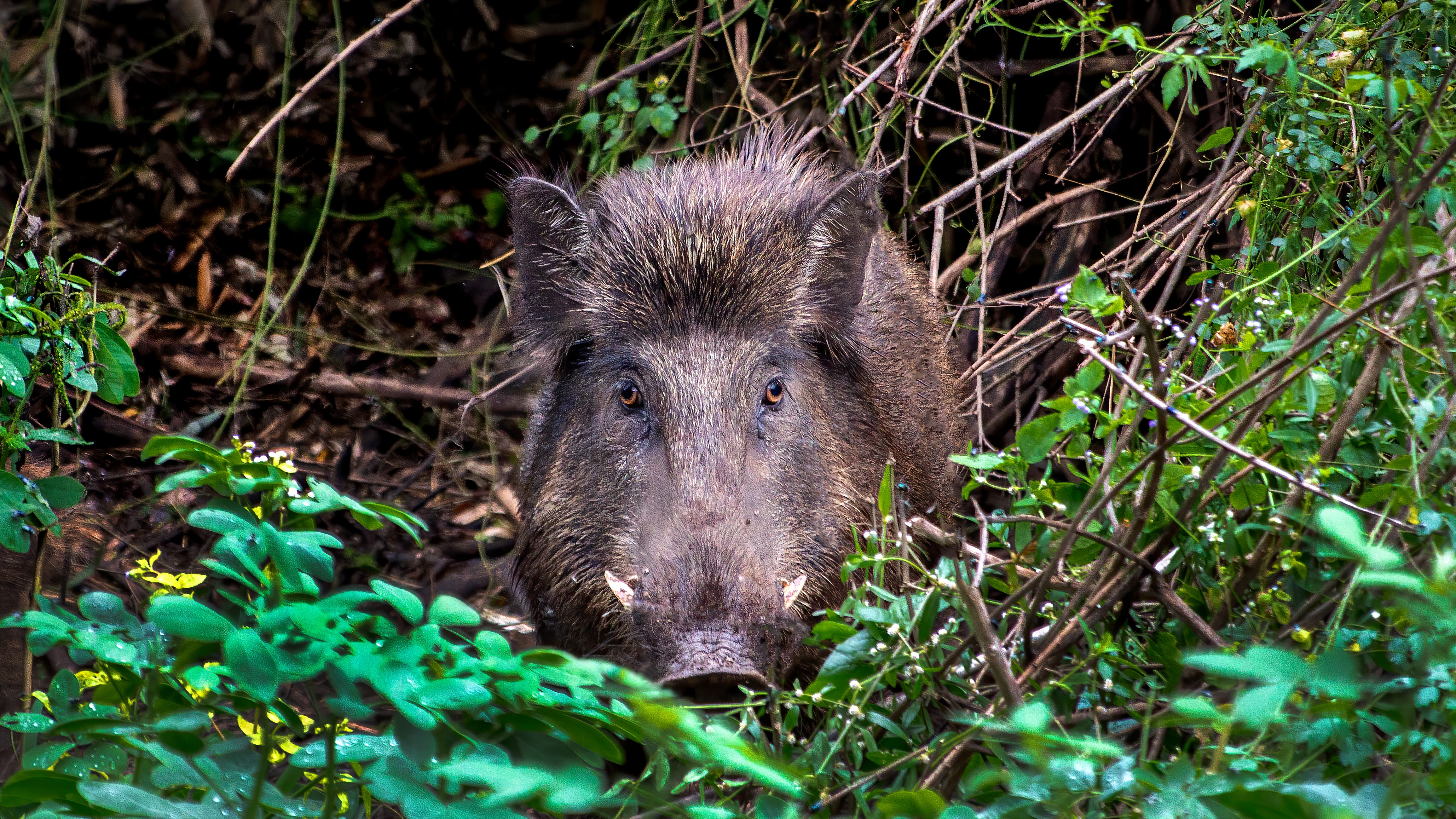
A bulky, wild pig that can be found on most continents, the wild boar (Sus scrofa) can be defensive and aggressive if encountered, charging at speed and using its tusks in self-defense. Males can weigh up to 220 pounds (100 kg) and tend to be solitary, unlike females, which live in family groups.
A 2023 study into global human-wild pig encounters found that fatal attacks are rare, with 172 fatalities recorded between 2000 and 2019 — an average of 8.6 people per year. Most victims were walking alone in densely forested areas and died from lacerations or subsequent infections, found researchers.
Gray wolves
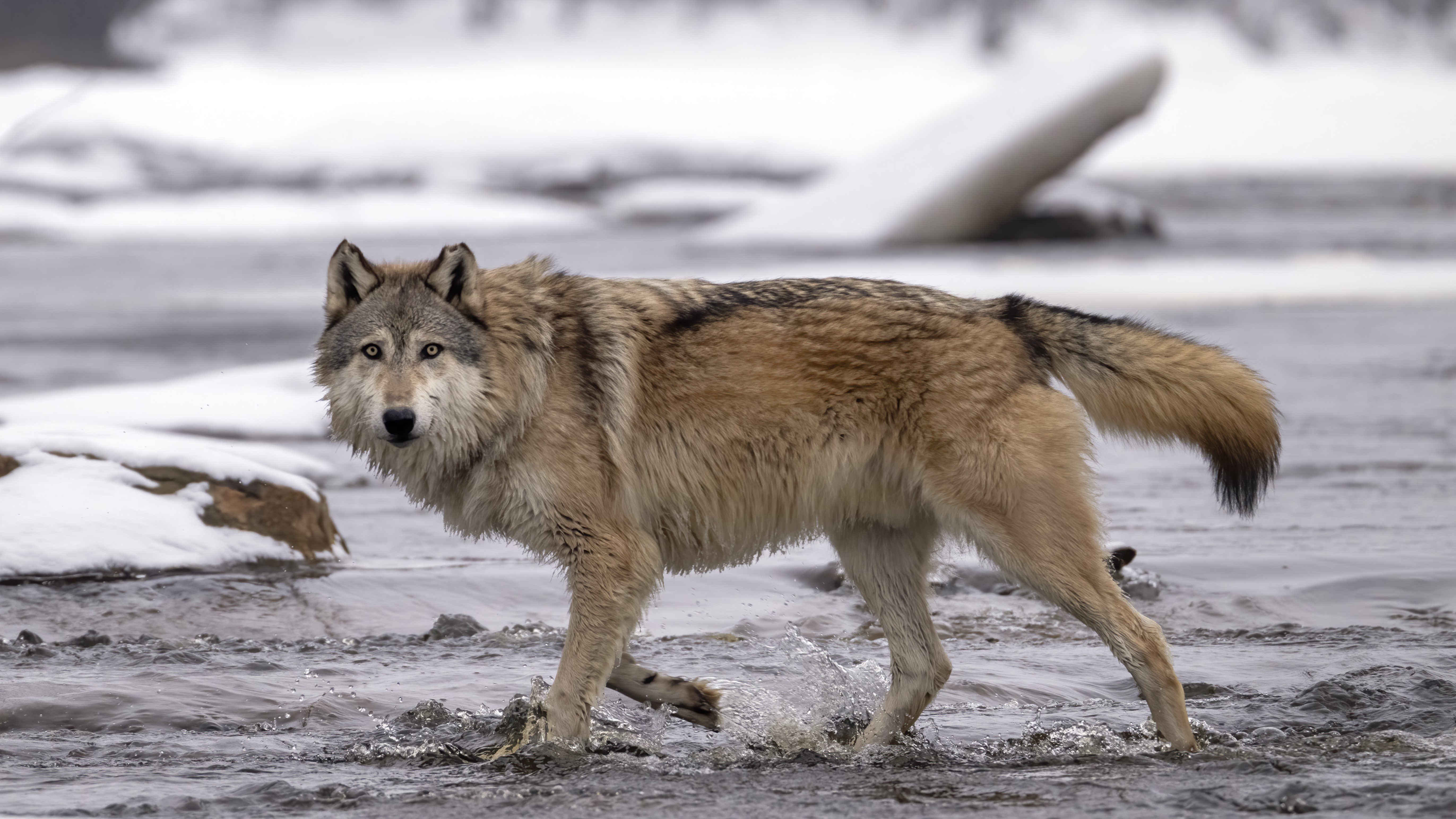
Wolves tend to avoid humans and rarely attack unless they feel threatened, however human fatalities have been reported. A 32-year-old woman was killed in Alaska by a predatory wolf in 2010 and a family of four was attacked by wolves while camping in Banff National Park in 2019.
In a 2021 study into wolf attacks on humans between 2002 and 2020, researchers found that most human fatalities resulted from contracting rabies following a wolf bite. In Europe and North America, despite large wolf populations, attacks remain rare.Only 26 fatalities were recorded over an 18-year period worldwide, with most taking place in Turkey.
Stonefishes
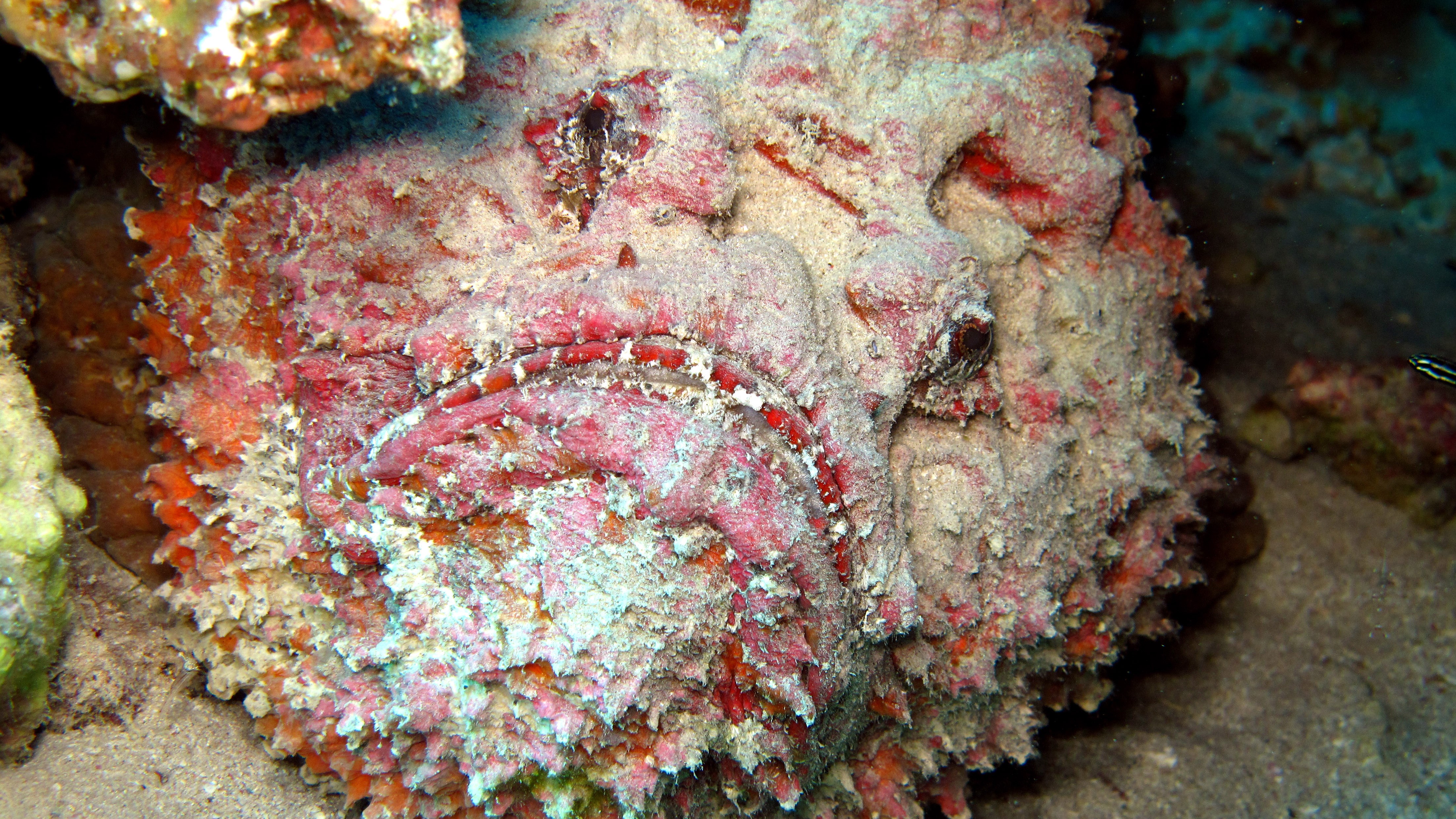
The world's most lethal fish, the stonefish, is a venomous fish that is loaded with enough toxin to kill an adult human if untreated by antivenom.
There are five venomous stonefish species in the genus Synanceia, and all have poisonous dorsal spines containing the deadly verrucotoxin (VTW). Stings cause intense pain, respiratory and cardiac difficulty before death.
Found in warm, shallow coastal waters in the Pacific and Indian Oceans, the fish tends to sting in defense if stepped on or touched by a human. Despite its toxicity, fatalities are relatively rare: Most people seek urgent medical assistance due to the intense pain caused by the sting.
Dubois' sea snake
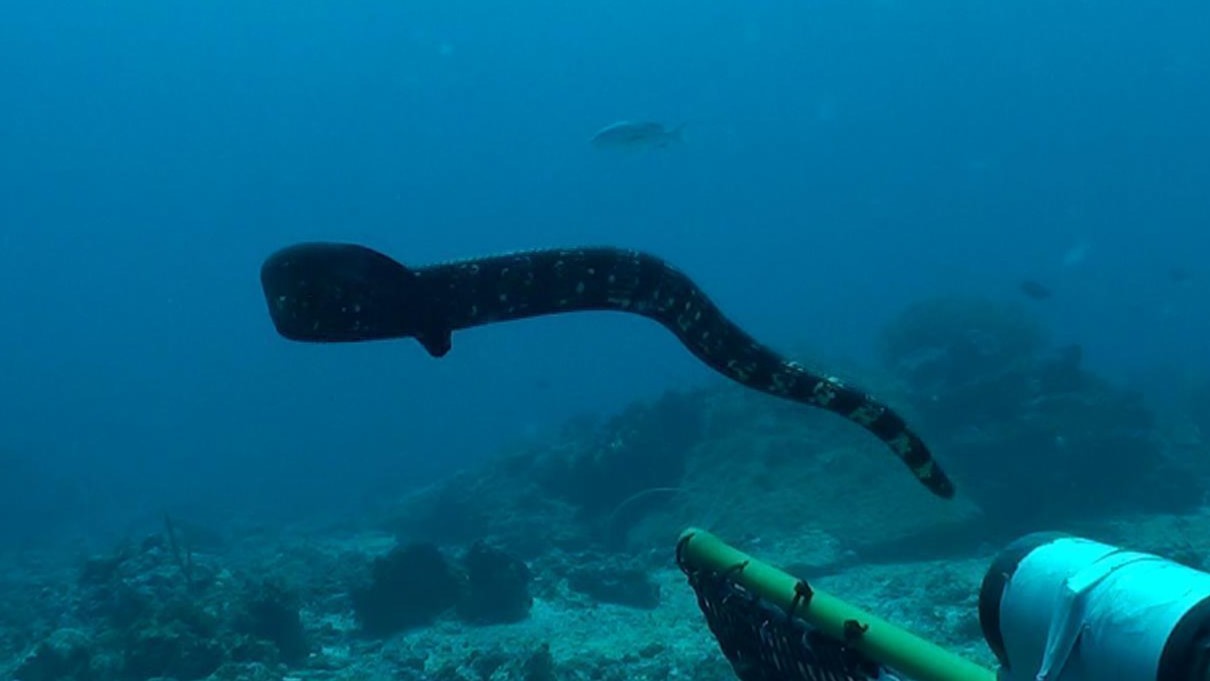
Officially the most venomous sea snake in the world, the Dubois' sea snake (Aipysurus duboisii), also known as the reef snake, is found in coral reef flats in tropical and subtropical waters around Australia, Papua New Guinea and New Caledonia.
Sea snake venom contains a potent neurotoxin that can cause respiratory and cardiac difficulty, sickness and paralysis, and be potentially fatal, unless treated with antivenom.
Sea snakes aren't aggressive and tend to only bite in self-defense. People living and working in the sea are most likely to be bitten. However, human fatalities are rare, because most people respond well to medical treatment.
Sydney funnel web spiders

There are over 40 species of funnel web spiders, and the Sydney funnel-web spider (Atrax robustus) is considered the deadliest, causing all of the 13 recorded human fatalities, according to 2005 study. Mostly found in Australia, this notoriously dangerous spider is known for spinning intricate funnel webs to catch its prey.
The venom from a Sydney funnel web spider is highly toxic and fast-acting. Deathoccurs within 15 minutes in children and up to three days in adults unless an antivenom is administered. Since the development of antivenom in 1981, one death has been recorded.
According to the Australian Museum, it is the male spiders that tend to bite. Their venom contains a component known as robustoxin that the nervous systems of humans and monkeys but not other animals. Dogs and birds have reportedly survived bites.







